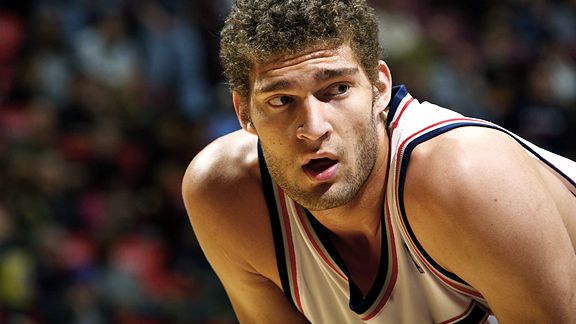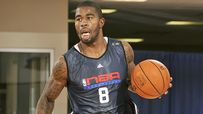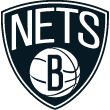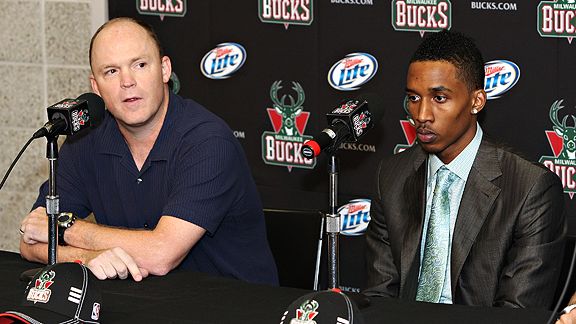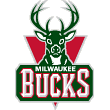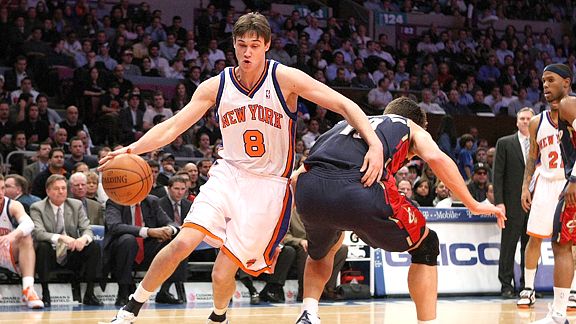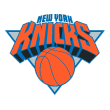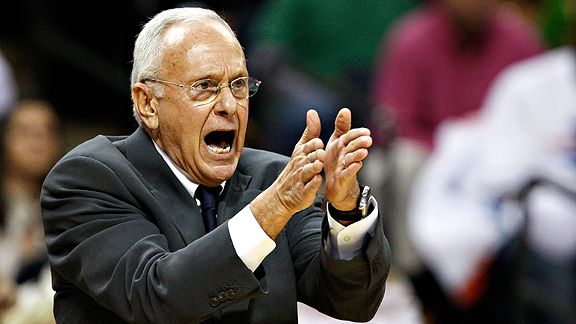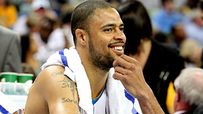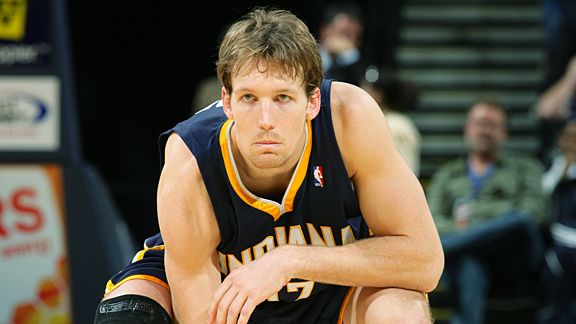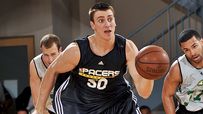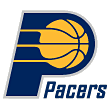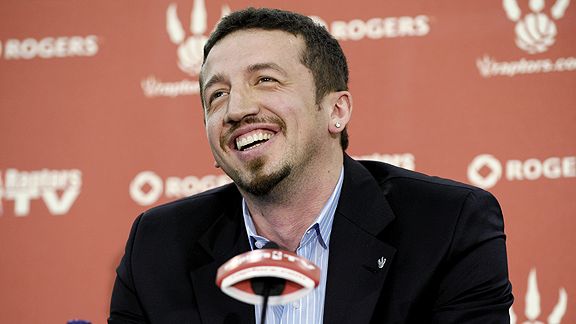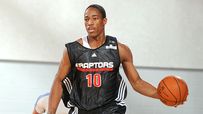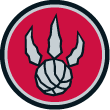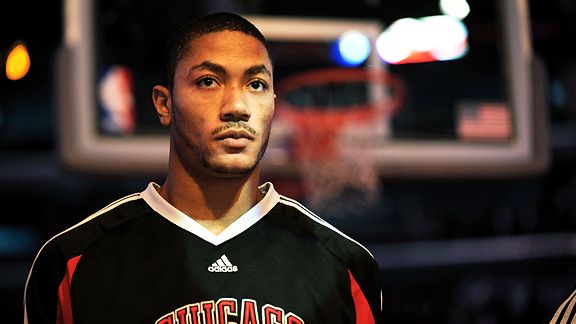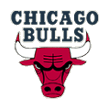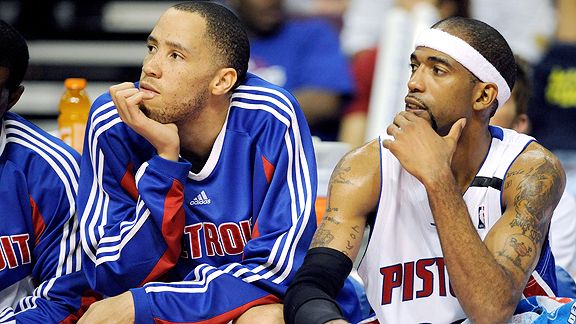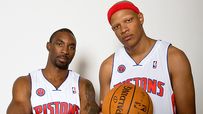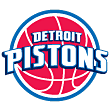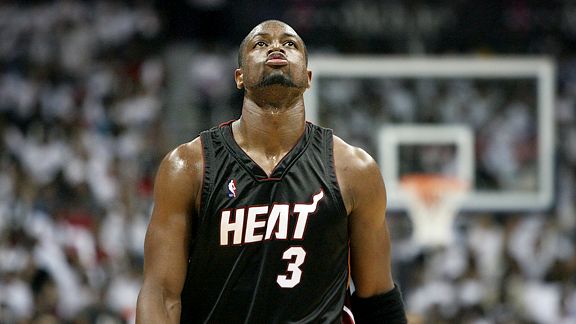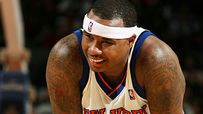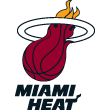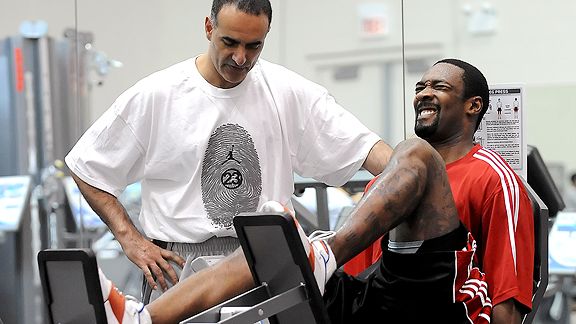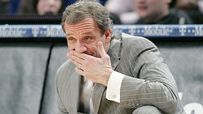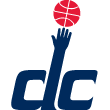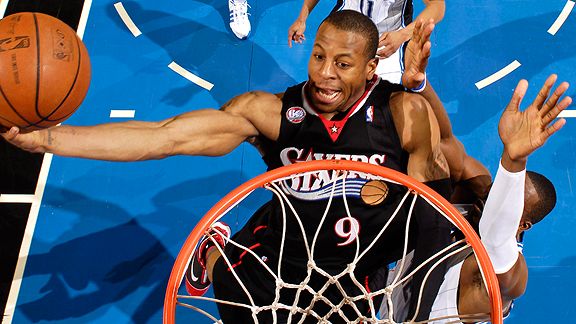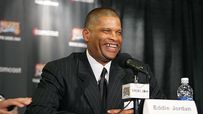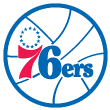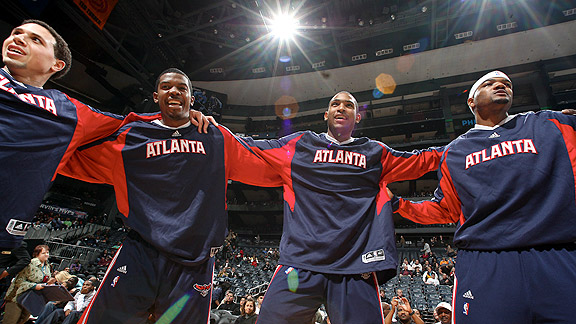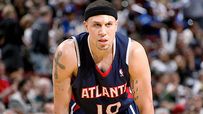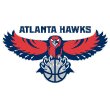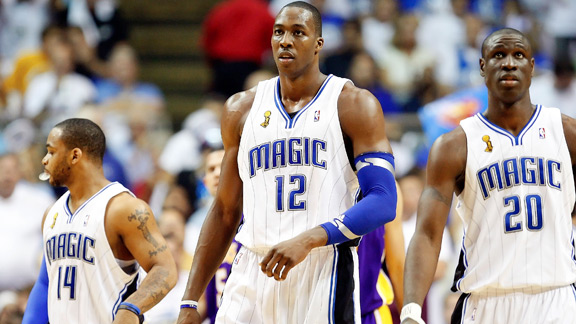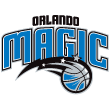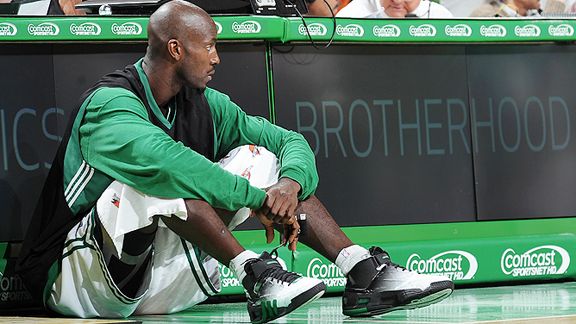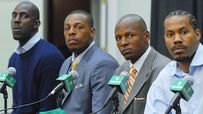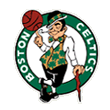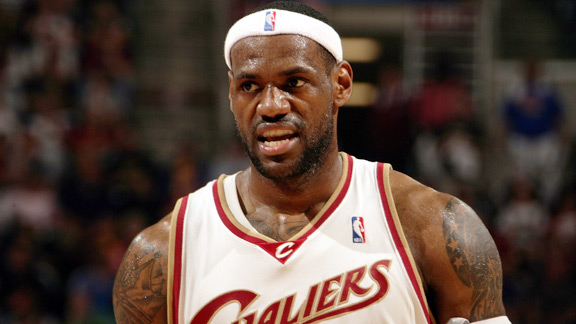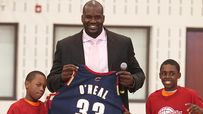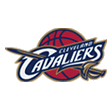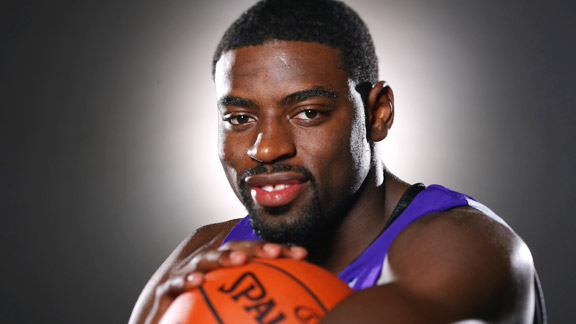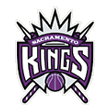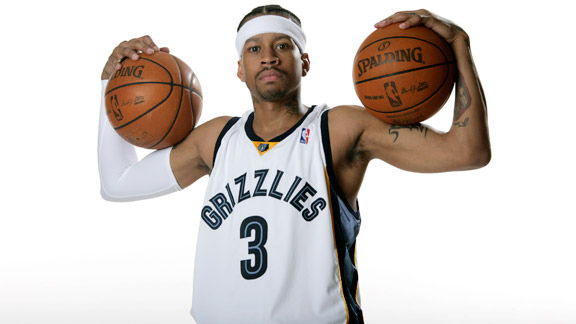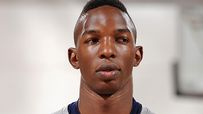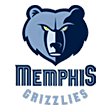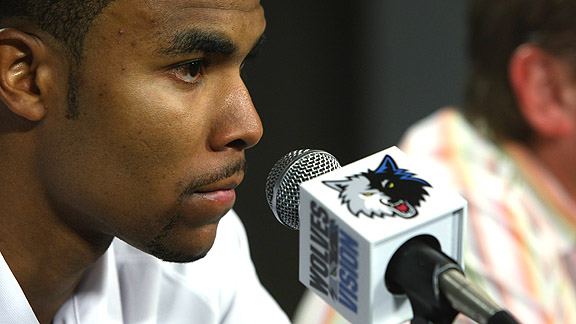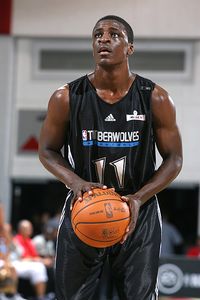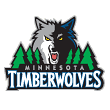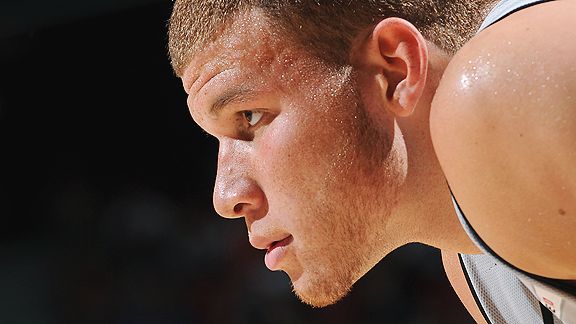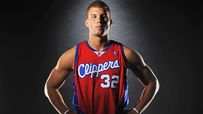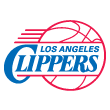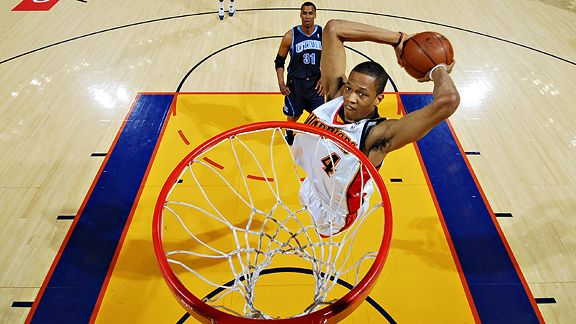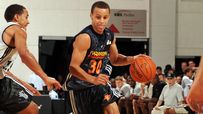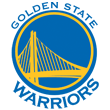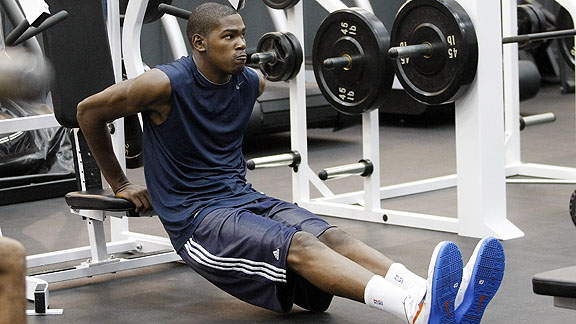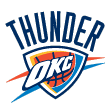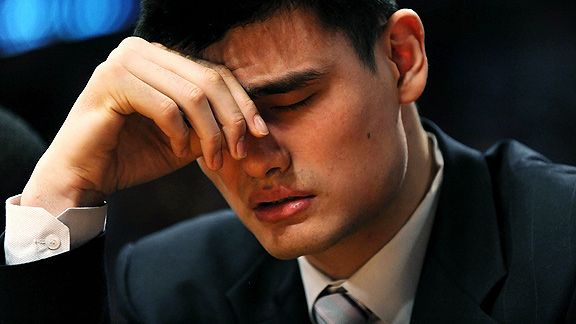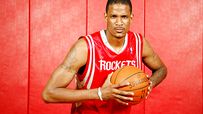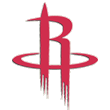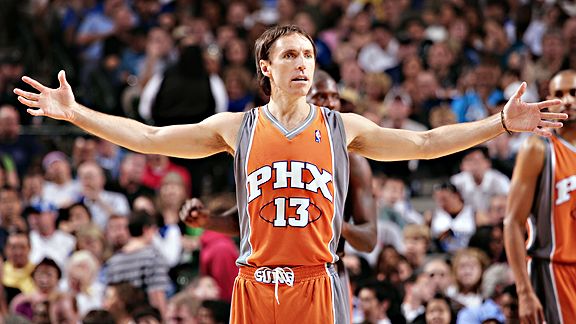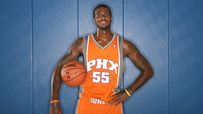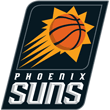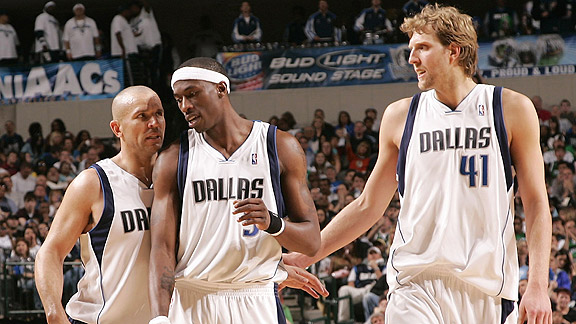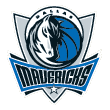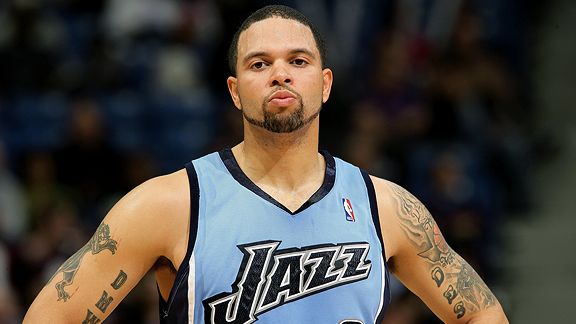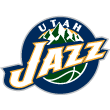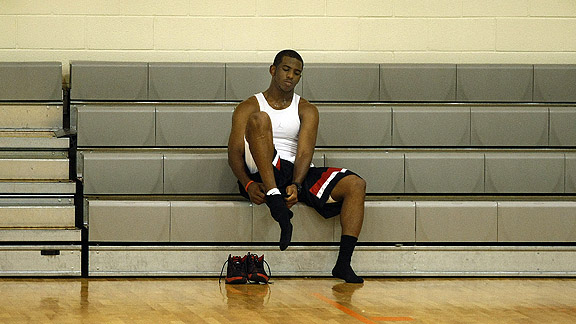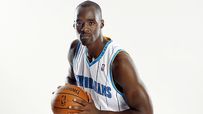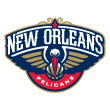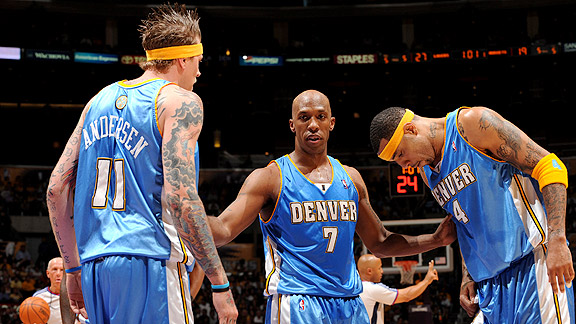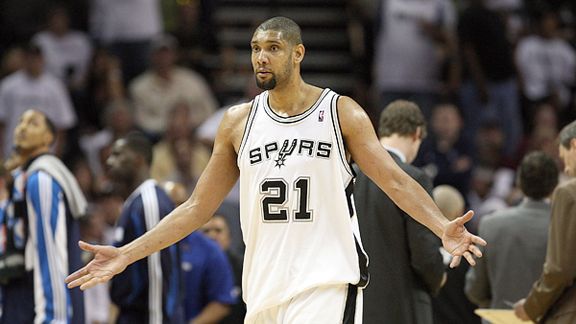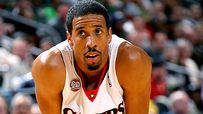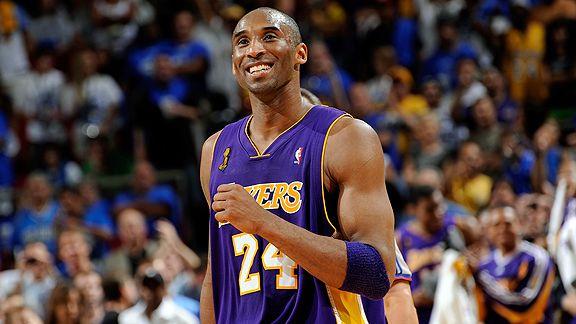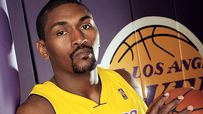- 3,677
- 57
- Joined
- Sep 6, 2007
[h2]THE EAST
[/h2]
[h2]2009-10 Forecast: New Jersey Nets[/h2] [h3]Can the Nets cope with the loss of VC? Will they be sold? Questions abound in Jersey[/h3]

Brook Lopez was one of the bright spots for the Nets last season. Will he continue to soar in Year 2?
http://
[h3]2008-09 Recap[/h3]
The Nets are a little bit like a grand old mansion falling into disrepair. At first the signs are subtle -- some chipping paint here, a loose shingle there -- but over time the deferred maintenance becomes progressively more noticeable. And after a few years, you look up at a dilapidated shell and think, "Man, what happened to that place?"
That's kind of where the Nets are right now. In 2008, for the first time since 2001, the former two-time conference champions entered a season with dim playoff hopes, as well as without stalwarts Jason Kidd and Richard Jefferson. Despite the diminished roster, the Nets managed to cling to a spot in the Eastern Conference playoff race for half the season before succumbing to injuries and a tough late-season schedule. New Jersey stayed afloat early thanks to unexpected productivity from two players -- Devin Harris and Brook Lopez. The Nets liberated Harris from Dallas in the Jason Kidd trade, but even they didn't imagine that he'd break out the way he did in the first half of last season. He earned a living at the free throw line, averaging nearly nine attempts a game, and made the All-Star team while leading the Nets in scoring.
[h4]HOLLINGER'S '08-09 STATS[/h4]
W-L: 34-48 (Pythagorean W-L: 33-49)
Offensive Efficiency: 105.4 (14th)
Defensive Efficiency: 108.2 (23rd)
Pace Factor: 92.4 (22nd)
Highest PER: Devin Harris (21.65)
Lopez, meanwhile, arrived with much less fanfare than several other first-year players but probably should have won the rookie of the year award. The 10th overall pick solidified the middle by averaging 13 points on 53.0 percent shooting and led all first-year players in estimated wins added.
Combining Harris' and Lopez's efforts with another solid season from Vince Carter -- one in which he would have landed on the All-Star team had the Nets not fallen so far off the national radar -- New Jersey benefited from a very solid three-man core, one that helped the Nets to a 19-19 mark through 38 games.
Unfortunately, those three received no help whatsoever, as the Nets paired the aforementioned trio with the worst forward combo in the league. Milwaukee discards Bobby Simmons and Yi Jianlian started at forward, and even though they labored to supbar seasons they kept their jobs because New Jersey didn't have anybody better. Had the Nets merely squeezed average production from these two spots, they would have easily made the playoffs, even with the late-season injuries to Harris.
As it was, New Jersey devoted nearly a hundred minutes a game at the two forward spots to a combo of six players -- Simmons, Yi, Jarvis Hayes, Trenton Hassell, Ryan Anderson and Eduardo Najera. Those six provided their employer an average PER of 10.97, which is essentially replacement-level production.
Only Anderson produced at an acceptable rate offensively, and his output was more than offset by struggles at the defensive end. Of course, that still made him better than Yi, who seemed overmatched at both ends of the floor -- especially after returning from injury after the All-Star break. (Fun postscript for Nets fans: After the season they traded Anderson and kept the other five.)
[h4]Nets forwards, 2008-09[/h4] [table][tr][th=""]Player[/th] [th=""]Minutes[/th] [th=""]PER[/th] [/tr][tr][td]Anderson[/td] [td]1,312[/td] [td]13.63[/td] [/tr][tr][td]Simmons[/td] [td]1,729[/td] [td]12.06[/td] [/tr][tr][td]Yi[/td] [td]1,421[/td] [td]10.98[/td] [/tr][tr][td]Hayes[/td] [td]1,832[/td] [td]10.85[/td] [/tr][tr][td]Hassell[/td] [td]1,094[/td] [td]7.23[/td] [/tr][tr][td]Najera[/td] [td]319[/td] [td]7.71[/td] [/tr][tr][td]Total[/td] [td]7707[/td] [td]10.97[/td] [/tr][/table]
Thanks to the forward fiasco, New Jersey won 34 games instead of 40-something. One can only wonder how differently things might have turned out if the Nets hadn't traded Jefferson to Milwaukee for Yi and Simmons in a financially motivated deal prior to the season.
Unfortunately, financially motivated deals are likely to play an outsized role in the Nets' future, as the story off the court was infinitely worse than the story on it. Another year passed without a shovel going into the ground on the Nets' long-awaited move to Brooklyn, and at this point one wonders if it will ever come to pass.
In the meantime, the team struggles to draw in New Jersey and is hemorrhaging red ink, reportedly losing $25 million last year alone. The Nets dramatically scaled back most of their operations (scouting, sales, etc.) and have already sold advertising on virtually everything that's nailed down in the Izod Center, so player salaries are about the only thing left to cut.
Those considerations may have been a factor in Lawrence Frank staying at the helm amid rumors that general manager Rod Thorn wasn't terribly pleased with his performance -- New Jersey was reluctant to shell out his guaranteed salary for 2010-11 while also paying his replacement.
Alas, Thorn might want to check his own windows before he starts hurling bricks, as several questionable personnel moves have left the Nets short-handed talentwise. Those shortcomings were most evident at the defensive end, where the Nets had fared well throughout Frank's tenure before slipping noticeably last season.
New Jersey did solid work against 2-point shooters, holding opponents to a league-average 48.5 percent, and that almost always leads to solid numbers overall. Almost always. In this case the Nets gave up so many 3-pointers and free throws that they still finished 24th in opponent true shooting percentage. New Jersey surrendered 39.1 percent accuracy on 3-pointers last season; only Sacramento fared worse. And the Nets' opposition averaged .355 free throw attempts per field goal attempt, placing New Jersey 28th.
That undermined a surprisingly solid effort at the offensive end, where Harris' free throws and a low turnover rate combined to push New Jersey just above the league average in offensive efficiency -- even though the Nets were just 24th in shooting percentage.
http://

[h3]Offseason Moves[/h3]
Financial constraints led New Jersey to unload the last of their big contracts while becoming the league leader in firing assistant coaches and scouts. Although they're miles below the luxury tax threshold, they could make other moves to trim more payroll. However, any cutbacks may be much less dramatic now that Russian billionaire Mikhail Prokhorov has agreed to purchase the team. He'll inject some much-needed capital into the operation and likely provide the financial impetus needed for the team to complete it's long-scheduled move to Brooklyn.
Traded Vince Carter and Ryan Anderson to Orlando for Courtney Lee, Rafer Alston and Tony Battie. The Nets unchained the final link to the Jason Kidd era, trading Carter for spare parts after his very solid 2008-09 campaign. Although this was a salary dump plain and simple, New Jersey didn't come out of the deal empty-handed. Lee showed potential as a defensive stopper in his rookie season in Orlando and will likely take over Carter's spot as the starting shooting guard. Alston and Battie also provide some value as defenders off the bench, though it seems likely the Nets will either buy out or trade both at the trade deadline since each has an expiring contract.
Picked up Jarvis Hayes' option. New Jersey will pay Hayes just a shade over $2 million this season, which is a surprise considering his limited output last season and the Nets' dire financial straits. New Jersey did seem to function well when he played as a small-ball 4, however, and it's possible he'll see more time in that role this season if Yi continues to struggle.
Drafted Terrence Williams. Williams proved an enigma in his four years at Louisville and has three trends working against him -- the history of four-year players drafted in the lottery, the history of Rick Pitino products in the NBA, and the history of players drafted by Rod Thorn. Every rule has its exception, however -- for instance, Thorn came up with a plum in Lopez a year ago -- and Williams has as much opportunity as any rookie given the dearth of quality wings on the Nets' roster.
Received two second-round picks from Golden State. The Nets got a freebie from the Warriors in return for delaying their receipt of a first-round pick from the Marcus Williams trade until at least 2012; the pick was so heavily protected that they weren't likely to get it until 2012 anyway, so this was found money.
http://
[h3]Biggest Strength: Backcourt depth[/h3]
New Jersey doesn't have a lot going for it, but one thing it can hang its hat on is a multitude of options in the backcourt. It starts with Harris, who will orchestrate nearly every play now that Carter is gone. Harris could lead the league in usage rate given the paucity of other options on the Nets' stripped-down roster, and he may very well return to the All-Star Game even if the Nets are terrible.
Harris will likely pair with other small guards more than ever since New Jersey has three capable point guards. Alston is the second one, coming over from Orlando, where he supplied solid defense and ballhandling to offset his iffy shooting. And Keyon Dooling shouldn't be forgotten either -- he's a solid option at either guard slot and has enough size to capably guard most 2s when the Nets play small.
The backcourt depth extends to the shooting guard spot, where Lee and Williams would make for a decent combo if Williams didn't have to start at the 3. Lee didn't play a major offensive role in Orlando but may look for his shot a lot more with the undermanned Nets, and Williams could play a major offensive role as well. Additionally, don't sleep on Chris Douglas-Roberts. Though he played sparingly as a rookie a season ago, he was very productive in his minutes and the rebuilding Nets would be wise to stick him in the rotation and see if he produces.
[h3]Biggest Weakness: Forwards[/h3]
If you thought the Nets' forward situation was ugly last season, wait until you see what's in store this season. First the good news -- Yi supposedly had a strong summer, so perhaps he'll contribute at a higher level than he did a season ago. It's difficult to fathom how he could be any worse. From there, it's a series of unpalatable options. Rookie Williams will likely have to start at small forward because the other options (Simmons and Hayes) are so brutal, while at power forward it might be Yi or bust -- limited veteran Battie is the only other option unless the Nets want to play small and use Hayes.
Don't expect much help to arrive from outside either. With the Nets in rebuilding and cost-cutting mode, this is the crew that likely will have to sink or swim this season. Based on the Nets' track record, my money is on "sink."
http://

[h3]Outlook[/h3]
Harris and Lopez make for a nice nucleus, and the additions of Lee, Alston and Battie could improve the Nets a bit on defense from a season ago. But in the big picture, the Nets traded one of their two difference-makers and are completely devoid of quality at the two forward spots. Frank will prepare and motivate his troops per usual so it's possible that his club might overachieve enough to keep things somewhat interesting for a couple of months, much as it did a year ago.
But "interesting" is about as much as we should expect from New Jersey. Harris, for all his gifts, is injury-prone, and one shudders to think how little the Nets would score without him. Additionally, some of the veteran reserves are unlikely to stay on the roster all season since New Jersey will likely strip-mine the team in search for cash and assets as the trade deadline nears.
As a result, it's likely to be a long, long year in The Swamp, albeit a short one chronologically -- there's no chance it will last beyond April 14. The bigger questions for this season aren't on the court but further down the line -- will Prokhorov's money and connections help expedite the move to Brooklyn, will the likely struggles this season yield a difference maker in the lottery, and will the Nets procure any decent players with the $25 million or so in cap space they'll have next summer? As far off as they are, those questions seem a lot more interesting than the product on the court.
[h3]Prediction: 24-58, fifth place in Atlantic Division, 15th in Eastern Conf.[/h3]
[h2]2009-10 Forecast: Milwaukee Bucks[/h2] [h3]Redd returns, but it may be a cold winter in Milwaukee after a major roster overhaul[/h3]

Bucks coach Scott Skiles appears to have something of a project on his hands in Brandon Jennings.
http://
[h3]2008-09 Recap[/h3]
The thing everyone forgets about the NBA is how quickly a team can go off the rails thanks to a couple of key injuries. The Bucks provided a great example of that effect a year ago, as a fantastic start was muted by bad luck in close games and then major injuries to their two best players basically killed any chance of making the playoffs.
That shouldn't take the luster off what, in some respects, was an amazing season in Milwaukee. New coach Scott Skiles came in and did exactly as he'd done in Phoenix and Chicago, immediately engendering a vast defensive improvement. Milwaukee was the second-worst defensive team in the league in 2007-08, so by that standard the Bucks' improvement to 15th in defensive efficiency in 2008-09 was nothing short of staggering.
When healthy, the Bucks were a fairly potent offensive team, too. Charlie Villanueva and Ramon Sessions had breakout years while newly acquired Richard Jefferson joined Michael Redd and Andrew Bogut to give the Bucks five strong offensive weapons.
[h4]HOLLINGER'S '08-09 STATS[/h4]
W-L: 34-48 (Pythagorean W-L: 37-45)
Offensive Efficiency: 103.8 (23rd)
Defensive Efficiency: 104.9 (15th)
Pace Factor: 95.2 (11th)
Highest PER: Michael Redd (17.97)
At midseason the Bucks were a surprisingly respectable 19-22, and that mark underrated the Bucks' strength. They were in nearly every game, losing by more than 15 just once in those first 41 games but posting five wins by such margins. In fact, at midseason the Bucks' disparity between their real wins (19) and expected wins (21.5) was the largest negative difference in the league.
Additionally, Milwaukee did this with a first-half schedule that had 23 road games and included several heavyweights. So while it looked like they were a mediocre-to-average team during the first half, they were actually quite good.
Unfortunately, Redd and Bogut were lost to injury soon after that, and almost immediately the Bucks began sinking like a lead balloon. Much as the first-half record doesn't do justice to how well they played, the second-half mark of 15-26 shortchanges the extent to which the Bucks slipped. Milwaukee had a favorable schedule but was ravaged by injuries and struggled to compete -- in one 15-game stretch they suffered seven double-digit defeats.
[table][tr][td]Opponent FTA per FGA, 2008-09 worst[/td] [/tr][tr][td]TEAM[/td] [td]Opp. FTA/FGA[/td] [/tr][tr][td]Milwaukee[/td] [td].398[/td] [/tr][tr][td]New Jersey[/td] [td].357[/td] [/tr][tr][td]Sacramento[/td] [td].355[/td] [/tr][tr][td]Indiana[/td] [td].354[/td] [/tr][tr][td]Utah[/td] [td].343[/td] [/tr][/table]
That left the Bucks out the money at 34-48, but it shouldn't detract from an incredible turnaround at the defensive end. Much of it was a visible improvement in the effort level from the previous year, befitting Skiles' hard-nosed style, but personnel mattered, too -- none more so than rookie Luc Richard Mbah a Moute. An afterthought as a second-round pick, he was one of the league's best defenders as a rookie and helped the Bucks eradicate a glaring deficiency against combo forwards. Sessions helped, too, providing a plus defender to replace the chronically undermotivated Mo Williams.
Milwaukee's defense was a high-risk bunch that grabbed and hacked like crazy in an effort to force turnovers -- a Utah defense, basically. The Bucks led the league in fouls and in opponent free throw attempts per field goal attempt by wide margins (see chart), and all those freebies were why they couldn't do better than league-average overall despite strong numbers in other categories.
On the other hand, the Bucks really succeeded at reducing opponent's shooting opportunities. Milwaukee ranked just 28th in opponent true shooting percentage, but because the Bucks forced so many turnovers and rebounded well they gave up fewer shot attempts than any other team. Milwaukee allowed just .93 shots per opponent possessions (with "shot" defined to include trips to the line), limiting the impact of the high opponent true shooting percentage.
[table][tr][td]Fewest opponent shots* per possession, 2008-09[/td] [/tr][tr][td]TEAM[/td] [td]Shots/poss.[/td] [/tr][tr][td]Milwaukee[/td] [td].934[/td] [/tr][tr][td]Utah[/td] [td].948[/td] [/tr][tr][td]Boston[/td] [td].953[/td] [/tr][tr][td]Memphis[/td] [td].954[/td] [/tr][tr][td]Miami[/td] [td].954[/td] [/tr][/table]* - shots=(FTA0*0.44) + FGA
One other huge factor in Milwaukee's season, however, was a negative disguised as a positive -- the several veterans Milwaukee imported before the season. By signing Francisco Elson and trading for Luke Ridnour the Bucks improved their depth, which had some benefits in the 2008-09 campaign. But the obligation of $8 million in 2009-10 money to two marginal players badly hurt their long-term planning, and was a major contributor to the denuding of the roster that took place after the season.
That's why enthusiasm about last season must be tempered -- the Bucks basically loaded up with veterans to try to squeeze into the playoffs, so in that light 34-48 seems less like a surprise and more like a setback. We'll talk more about the ramifications in the next section.
http://
[h3]Offseason Moves[/h3]
Finding themselves caught in the nasty whipsaw of a rising payroll and a declining luxury-tax level, the Bucks shed money as fast as they could this summer. Milwaukee would have been several million dollars over the luxury tax had they not taken such action, so certainly one can defend the rationale for several of their moves. But as we can see, they chose to apportion the dollars in some rather puzzling ways.
Drafted Brandon Jennings and Jodie Meeks. OK, so far so good. Jennings is a project at the point who played in Europe last season and struggled mightily, but he has great quickness and the ability to be a high scorer from the point guard spot. With the 10th pick in the draft he's a high-risk pick but one with a lot of upside. Second-rounder Meeks was probably the best shooter in the draft but the question is whether he'll do enough other things to keep himself in the league.
Traded Richard Jefferson to San Antonio for Bruce Bowen, Kurt Thomas and Fabricio Oberto. A salary dump necessitated by their tenuous cap position, the Bucks cut $3 million in salary via the difference in salaries in the trade and an additional $2 million by waiving Bowen, who only had a partially guaranteed contract. Thomas figures to be a contributor off the bench and fill the void at backup center, so they at least got something of value out of the deal.
Traded Malik Allen to Denver for Walter Sharpe and Sonny Weems. As near as I can tell this trade has no significance whatsoever other than to include Weems as a minimum contract in the next trade below. Sharpe hurt himself during summer league and may not play this year.
Traded Oberto for Amir Johnson; Traded Johnson and Weems to Toronto for Carlos Delfino and Roko Ukic. These trades yielded two significant results -- first, the Bucks took on an additional $3.5 million in salary by turning Oberto's non-guaranteed contract into a three-year deal for Delfino worth $10.5 million. Second, they got a halfway decent backup wing player to fill the hole left by the Jefferson trade. Ukic was terrible in Toronto last season and may not play much, but Delfino will have a major role as the Bucks' sixth man.
Signed Ersan Ilyasova for three years, $7 million. A restricted free agent since the Bucks never renounced him after he left for Europe two years ago, Ilyasova improved quite a bit while he was across the pond and was one of the best rebounders in Europe last year. He's capable of being a full-time 4 now and should produce respectable numbers as a reserve. However, this was more spending by the Bucks that prevented them from making other significant moves, as we'll see in a minute.
Signed Hakim Warrick for one year, $3 million. It's odd for a team in the Bucks' financial situation to turn around and use a big chunk of their midlevel exception, but it's tough to argue with the value proposition here. Warrick was one of the most productive reserves in basketball a year ago and should step up to a starting job in Milwaukee. He's a poor defender but it's rare to find a skilled offensive player this cheaply.
Let Charlie Villanueva go. This was an odd one because the Bucks didn't even put up a fight -- they pulled his qualifying offer early in free agency and basically kissed him goodbye. It was odd to see them shoo off a 24-year-old forward entering his prime years, especially since his price tag wasn't terribly high -- Detroit inked him to a five-year, $35 million deal, and keeping the restricted tag on him likely would have chilled the market further and allowed Milwaukee to keep him more cheaply.
In Milwaukee's defense, Villanueva has a rep as flighty and power forward is the game's easiest position to fill right now (witness their procuring Warrick so cheaply). Nonetheless, they spent more than $5 million in 2009-10 salary on Warrick and Ilyasova when the money could have been apportioned to Villanueva.
Let Ramon Sessions go. The Villanueva move was odd, but this? This was completely indefensible. Milwaukee's stated reasons for not matching Minnesota's four-year, $16 million offer sheet were that they didn't want to pay the luxury tax and they see Jennings as their future at the point.
Neither makes sense. The Bucks shelled out nearly $10 million for Delfino, Ilyasova and Warrick and carried the full 15 players on their roster heading into camp, so the tax avoidance excuse rings hollow -- although signing Sessions would have temporarily put them over by $2.1 million, they easily could have gotten back under at the trade deadline with a low-wattage deal (say, paying somebody to take Francisco Elson and Meeks).
As for the Jennings-is-the-future angle, puh-leeze. While he's a tantalizing prospect, it's highly unlikely that he'll be able to perform at a level anywhere near that of Sessions for at least two seasons. Even if he beats that estimate there's a nifty rule in the NBA that allows you to trade players. At a bare minimum, the Bucks should have preserved their asset to trade it later.
Instead, Milwaukee lost a chance to lock up its two best young players at a reasonable salary so they could pay the likes of Luke Ridnour and Ilyasova, a terrible piece of cap management. At first I defended the removal of Villanueva's qualifying offer as a signal to the market that they'd keep Sessions, trying to play poker to lower his price, because I figured it was the only rational reason to do so. Apparently that wasn't the case, as the Bucks declined to match the four-year, $16 million offer from Minnesota -- peanuts for a player of this quality.
It also flies in the face of the other spending decisions the Bucks made the past two years. Milwaukee committed nearly $20 million for Ridnour, Ilysava, Elson, Allen, Delfino and Warrick. They could have kept Villanueva and Sessions for half that price. In fact, if they had just resisted the irrational impulse to effectively trade Joe Smith for Ridnour in the Mo Williams trade last summer, they could have still inked Warrick, traded for Delfino and stayed under the tax, and they'd have a real team with two good young stars under reasonable contracts.
Instead they have an unwieldy mishmash of veteran retreads. You deserve better, Brewtown.
http://
[h3]Biggest Strength: Wing Defense[/h3]
One area in which the Bucks should prove stout is defending against quality wing players. This may seem odd at first, since Redd is the Bucks' most prominent wing player and he's not exactly renowned for his tough D. But every other player Milwaukee trots out at the 2 and 3 will be a capable stopper, and Skiles' concepts have helped all his teams punch above their weight defensively.
Charlie Bell has proven his toughness the past two seasons playing as the Bucks' defensive stopper against most quality 2s, but he's probably only third in the pecking order now. Newly arrived Delfino is a very good defensive player who can handle 2s or 3s and rebounds very well for his size and should supplant Bell as the top defender off the bench.
And finally, there's Mbah a Moute. He's an All-Defense caliber performer at either the 3 or the 4, and with his length, quickness and tenacity he can guard pretty much any position on the floor. He won't get any All-Defense recognition because the Bucks are invisible on the national radar, but he's one of the best defenders in basketball.
[h3]Biggest Weakness: Point Guard[/h3]
Not to put too fine a point on the Sessions debacle, but another reason it stinks is because of what was left behind at the point guard spot. Ridnour, Jennings and Ukic figure to strike little fear into opponents' hearts, with all three likely to be major defensive liabilities and only Jennings posing the threat of contributing much offense. Ridnour inexplicably started ahead of Sessions for half of last season and will likely get the call again, but he's injury prone, struggles from outside and his lack of size makes him a defensive liability.
Jennings had a disastrous season in Europe a year ago, and while his potential can't be ignored, the short-term reality is that his translated stats from last season were CBA-quality. It's likely to be a long learning process for him. As for Ukic, he took his lumps as a rookie a year ago after posting similarly uninspiring European stats a year earlier, providing a cautionary tale for the Jennings bandwagon.
http://
[h3]Outlook[/h3]

The Bucks will play hard every night because Skiles won't settle for anything less, and they'll do a decent job at the defensive end because of their effort and the quality and depth of their wing defenders. Add in Sessions as the point and Villanueva at the 4 and this would have been a shoo-in playoff team, but the Bucks' puzzling decision to go in a different direction has stripped their offensive capability and left them holding perhaps the league's weakest hand at point guard.
It's a shame because so much of the damage was self-inflicted. The Bucks had a winning record with Redd in the lineup a season ago, and with him and Bogut rejoining the fray, Milwaukee had a great shot at taking a big step forward even without Jefferson. But subtracting three of the five starters and replacing them with bargains and castaways has left the Bucks short of offensive talent and, for the moment, largely bereft of quality young players.
In others words, not only are the Bucks bad right now, but they're likely to stay bad for quite a while. It's a depressing state of affairs for a once-proud franchise, and even with their financial limitations it's one that didn't have to happen.
[h3]Prediction: 25-57, 5th in Central Division, 14th in Eastern Conference.[/h3]
[h2]2009-10 Forecast: New York Knicks[/h2] [h3]After a nine-game leap last season, should we expect more of the same? Maybe not[/h3]

The development of Danilo Gallinari is essential to the Knicks' aspirations -- this season and beyond.
http://
[h3]2008-09 Recap[/h3]
Let's sum up this season in one word: hope.
The 2008-09 Knicks weren't really much better than they'd been under the disastrous tenure of Isiah Thomas. They won 32 games with many of the same players who had won 23, 33, 23, and 33 the previous four seasons, so the product on the court wasn't necessarily improved.
What changed was that big fat light at the end of the tunnel. With Thomas's reign of error behind them, the Knicks set about repairing all the damage -- a construction project on par with building Hoover Dam -- and bringing some order to a locker room in which the inmates had been running the asylum.
On those fronts the season was a huge success, and that was all anyone could ask. Thomas had left the Knicks with an impossible situation, capped out for several years with a bad team full of me-first wannabe superstars, and it's going to take a long time for the Bockers to dig themselves out.
In Year 1, coach Mike D'Antoni and general manager Donnie Walsh made a nice start. Early in the season they dumped two big contracts, belonging to forward Zach Randolph and guard Jamal Crawford, for the more cap-friendly ones of Al Harrington, Tim Thomas and Cuttino Mobley. These moves didn't do much for the team's on-court prospects, especially since Mobley had to retire when it was revealed that he had a serious heart problem, but they put them in position to dip well under the salary cap in 2010. They also bought out Stephon Marbury, relieving the franchise's biggest headache.
[h4]HOLLINGER'S '08-09 STATS[/h4]
W-L: 32-50 (Pythagorean W-L: 33-49)
Offensive Efficiency: 105.3 (17th)
Defensive Efficiency: 108.4 (24th)
Pace Factor: 99.0 (2nd)
Highest PER: David Lee (19.07)
Meanwhile, D'Antoni energized the fans with his open-court, attacking style and a surprising start that saw the Knicks in playoff contention at 21-25 in late February. They ran out of gas soon afterward, but stylistically his methods were a breath of fresh air after watching Thomas spend two years methodically pounding the ball into Randolph and Eddy Curry.
Curry was still on the team, but you'd have had a hard time proving it. He showed up out of shape and played only three games, hurting the Knicks' attempts to trade his onerous contract and create more salary-cap space. They unsuccessfully shopped another cap-killing deal, that of Jared Jeffries, even though Jeffries was healthy and stayed in the rotation all year.
Fortunately, New York's thin roster was a good fit for D'Antoni's short rotation. Much like he did in Phoenix, he typically used only seven or eight players. With rookie Danilo Gallinari missing most of the season with a back injury, and Curry and Jerome James joining him on the sidelines, D'Antoni went small. David Lee played as an undersized center nearly all year, often surrounded by three or even four guards.
[h4]Fewest blocked shots, 2008-09[/h4] [table][tr][th=""]Team[/th] [th=""]% opp. FGA blocked[/th] [/tr][tr][td]New York[/td] [td]2.90[/td] [/tr][tr][td]Milwaukee[/td] [td]4.91[/td] [/tr][tr][td]Minnesota[/td] [td]4.94[/td] [/tr][tr][td]San Antonio[/td] [td]5.01[/td] [/tr][tr][td]Sacramento[/td] [td]5.14[/td] [/tr][tr][td]League average[/td] [td]5.94[/td] [/tr][/table]
Those strategies explain the Knicks' defensive numbers. New York blocked only 2.9 percent of opponents' shots on the season, and I must emphasize the shocking awfulness of those results. It was not only less than half the league average; it was nearly half the average of every other team in the league (see chart). Not surprisingly, the Knicks also claimed the league's worst defense against 2-point shots, surrendering 51.8 percent accuracy from inside the arc.
New York rebounded decently despite its lack of size and didn't foul much, so it wasn't the worst defensive team overall. The Knicks finished 24th in defensive efficiency, in fact, which wasn't a bad showing considering the lack of size and depth. But without a serious upgrade in the frontcourt defense, it's hard to see that state of affairs improving much.
[h4]Worst 2-point field-goal defense, 2008-09[/h4] [table][tr][th=""]Team[/th] [th=""]Opp. 2-Pt. FG%[/th] [/tr][tr][td]New York[/td] [td]51.8[/td] [/tr][tr][td]Washington[/td] [td]51.6[/td] [/tr][tr][td]Memphis[/td] [td]51.0[/td] [/tr][tr][td]Oklahoma City[/td] [td]50.5[/td] [/tr][tr][td]Sacramento[/td] [td]50.4[/td] [/tr][tr][td]League average[/td] [td]48.5[/td] [/tr][/table]
Offensively, the Knicks were notable mainly for their tempo -- only Golden State played at a faster pace than their 98.9 possessions per 48 minutes. As with D'Antoni's teams in Phoenix, they took a ton of 3s and largely eschewed the foul line. New York attempted .322 3-point attempts per field goal attempt, the second highest rate in the league and nearly one-and-a-half times the league average. Unfortunately, they landed only 21st in accuracy at 36 percent.
Additionally, all those 3s came at the expense of free throws. New York's .268 free-throw attempts per field goal attempt ranked 28th out of the league's 30 teams. Fortunately, they generated a low turnover rate and a strong 2-point field goal percentage (thanks to Lee's 54.9 percent shooting), leading to a respectable 17th-place finish in offensive efficiency.
http://
[h3]Offseason Moves[/h3]
New York's offseason was a little bit like "Seinfeld" -- it was a show about nothing. There were a lot of meetings, discussions and rumors, but in the end the Knicks made no deals after draft day except to bring back their own free agents.
That said, it was a bit bizarre to see them offer Jason Kidd and Grant Hill multiyear deals -- not exactly the types of players you'd expect a rebuilding team to pursue. Fortunately for the Knicks, both players rebuffed their advances, leaving the Knicks on a pace to have enough cap room to pursue a major free agent a year from now and still fill in with other talent around the edges.
If they can somehow find another taker for the contracts of Jeffries and/or Curry, they could add two major free agents at once in 2010. Given the magnet that is the Big Apple, that might allow them to turn things around overnight; unfortunately, dealing either contract is a major long shot.
Incidentally, Thomas left the Knicks with another major liability in 2010 -- he traded their first-round draft pick, unprotected, to acquire Marbury when he first took over the team. That deal not only may cost the Knicks a high lottery pick in the 2010 draft, but by rule also precludes them from trading their first-rounder in 2011 -- something that could have helped sweeten a deal involving Jeffries or Curry.
Drafted Jordan Hill and Toney Douglas. I'm not a huge fan of Hill, but the Knicks sorely needed some athleticism in the frontcourt, and he can certainly provide it. He's unlikely to star, but if he can rebound and block some shots, he'll be a decent value with the eighth overall pick in a weak draft. Douglas has a rep as an ace defender but is undersized for a shooting guard and didn't shoot particularly well in college. He'll need to play right away, however, as the Knicks are badly lacking in wing depth.
Traded Quentin Richardson and cash to Memphis for Darko Milicic. This was a fantastic swap for the Knicks. They acquired a quality defensive center in return for one of their least productive wing players, and they accomplished it without harming their cap situation in 2010. Milicic's offensive potential was largely a figment of scouts' imaginations, but his length and timing at the defensive end make him a strong performer when he's motivated. Look for the Knicks to make heavy use of him to take some of the strain off Lee in the middle.
Re-signed David Lee for one year, $8 million. As a restricted free agent, Lee had trouble getting decent offers and settled on returning to the Knicks. He'll try again as an unrestricted free agent a year from now. In the meantime, it's a low-risk deal for the Knicks to keep their best young player around. By keeping him in the fold, they maintain a fall-back position should the top free agents spurn them next summer, and by limiting the contract to one year, they don't cut into their 2010 cap space.
Re-signed Nate Robinson for one year, $4 million. As with Lee, Robinson was a restricted free agent who had trouble getting decent nibbles. As with Lee, he ended up returning for less than market value, allowing the Knicks to keep him around for a year and see what happens.
http://
[h3]Biggest Strength: Offensive Versatility[/h3]
The Knicks lack a go-to star scorer, but they make up for it with the ability to attack in several different ways. Chris Duhon and Lee are a deadly pick-and-roll combo, with Lee among the best in the league at taking a pass on the move in the lane and flying in for the finish, making that play a staple of the Knicks' offense. It also opens up some action on the perimeter, particularly for Harrington. While he's a little too enthusiastic about shooting off the catch, Harrington's ability to space the floor and attack bigger players off the dribble makes him a tough matchup for opposing 4s.
Off the bench, the Knicks have human TNT in the form of Robinson, the diminutive but explosive guard. He's out of control at times, but he can also get on crazy hot streaks. Last season he reined in his play just enough to provide a potent sixth man, and they'll ask him to do it again. The two young small forwards, Gallinari and Wilson Chandler, also offer offensive weapons. Gallinari shot extremely well in his limited minutes a year ago and has a rep as a skilled passer as well. As for Chandler, his numbers overstate his effectiveness (more on that below), but he can finish in transition and attack the basket off the dribble.
Finally, there's Curry. It's not clear what to expect from him this season, but he can be a deadly low-post scorer when he's in shape and motivated. Should that happen, he can give the Knicks' offense a completely different dimension that it lacked a year ago.
[h3]Biggest Weakness: Wings[/h3]
I'm tempted to say frontcourt defense, but the Knicks should be better off on that front. Milicic gives them a true defensive center for the first time in ages, Hill should contribute energy and athleticism, and anything they get from Curry would be gravy. Based on the above, I suspect they'll block a lot more than 2.9 percent of opponent shots this season.
But they look awfully shaky on the wings. Larry Hughes and Chandler project as the starters, and while each makes for a decent rotation player, they're stretched to the limit in a 40-minute role. Hughes washed out as a starter in his past two stops thanks to his wayward outside shooting and iffy shot selection, while Chandler's gaudy per-game averages from a year ago are largely a by-product of the Knicks' fast pace and his own heavy minutes. On a per-minute basis, he's a mediocre offensive player and, like Hughes, an iffy shooter who doesn't create much for the others.
Those two must start, though, because there's little available in reserve. Late first-round pick Toney Douglas is the primary backup at shooting guard, while at small forward the Knicks will have to hope for a return to health from Gallinari -- not to mention pray that he can stay in front of the same 3s who blazed by him a year ago. The only other alternative is Jeffries, a truly rotten offensive player who has marginal utility as a defender in traps and presses.
http://

[h3]Outlook[/h3]
This is the last year of low expectations for the Knicks, and they may very well take full advantage of that fact. New York lacks an All-Star performer and is unlikely to make any moves to upgrade the roster during the season, as it needs to protect its precious cap-space trove for 2010 and hope that LeBron James, Chris Bosh or somebody else will step up to take it. If anything, the Knicks will spend the season shedding assets as they look to find new homes for Jeffries and Curry. Don't be surprised if the Knicks showcase those two, which would further diminish the team's prospects.
While New York has some nice pieces in Lee, Robinson, Chandler, Hill and Gallinari, the lack of star power and defensive grit could mean it takes a step back even from a year ago. While the frontcourt defense should be stronger than it was a year ago, New York is unlikely to be a strong defensive team overall. Additionally, the team has very little firepower on the wings and may experience a dip from last season's offensive numbers, particularly if Robinson and Lee regress from their career years. Another potentially aggravating factor is that five of the Knicks' top six players are free agents after the season -- meaning personal agendas could easily supplant team goals.
As a result of all those problems, New York is more likely to finish near the bottom of the Eastern Conference heap than challenge for a playoff spot. Fortunately, they can still sell their fans hope … just not immediate hope. Between the limited roster and the impending cap space, New York's next summer is likely to be a lot more exciting than its upcoming season.
[h3]Prediction: 26-56, 4th in Atlantic Division, 13th in Eastern Conference[/h3]
[h2]2009-10 Forecast: Charlotte Bobcats[/h2] [h3]Charlotte's thinking playoffs. But without much 'O', the 'Cats may be left out in the cold[/h3]

Are Larry Brown and the Bobcats thisclose to making the playoffs for the first time in their history?
http://
[h3]2008-09 Recap[/h3]
The good news: Charlotte set a franchise record for wins.
The bad news: Charlotte still finished 12 games under .500.
While the Bobcats finished the season with more hope than usual, in the end they faced the same outcome: One more trip to the lottery for a franchise that has never made the playoffs.
This time, a poor start to the season doomed them. Charlotte has played the league's most lopsided schedule the past two seasons, with most of its home games concentrated in the first half of the season. So it was particularly damning for them to get out of the gate 7-13, as 14 of their first 20 games were at home.
[h4]HOLLINGER'S '08-09 STATS[/h4]
W-L: 35-47 (Pythagorean W-L: 36-46)
Offensive Efficiency: 101.6 (27th)
Defensive Efficiency: 103.4 (7th)
Pace Factor: 90.8 (26th)
Highest PER: Gerald Wallace (18.64)
Charlotte went 28-29 the rest of the way, which is impressive considering there were eight more road games than home games. They flirted with a brief foray into the playoff chase before a 1-7 finish doomed them.
Along the way, the Cats changed out much of the roster, as new coach Larry Brown appeared to have a strong say in personnel matters, as well. Most of the swaps exchanged offense for defense, reflecting Brown's tendency to build slow-paced, defensive-minded teams. Charlotte claimed the league's seventh-best rating in defensive efficiency, but finished only 27th at the offensive end and played the league's fifth-slowest pace.
The dealing began with the swap of Jason Richardson and Jared Dudley to Phoenix for Raja Bell and Boris Diaw. Richardson was their leading scorer a year earlier but one of their weaker defenders, while Bell and Diaw are lesser scorers who both defend well. Charlotte also sent out Matt Carroll and Ryan Hollins for defensive-minded center DeSagana Diop, and traded Adam Morrison and Shannon Brown to the Lakers for Vladimir Radmanovic.
In total the roster usage looks like a typical Brown mess -- 24 different players saw action -- but by the end Charlotte had a very defined eight-man rotation.
[h4]Charlotte Bobcats with PERs below 8[/h4] [table][tr][th=""]Player[/th] [th=""]Min*[/th] [th=""]PER[/th] [/tr][tr][td]Adam Morrison[/td] [td]668[/td] [td]5.69[/td] [/tr][tr][td]Matt Carroll[/td] [td]476[/td] [td]5.57[/td] [/tr][tr][td]Nazr Mohammed[/td] [td]341[/td] [td]7.71[/td] [/tr][tr][td]Alexis Ajinca[/td] [td]182[/td] [td]7.02[/td] [/tr][tr][td]Sean Singletary[/td] [td]180[/td] [td]6.74[/td] [/tr][tr][td]Sean May[/td] [td]301[/td] [td]6.24[/td] [/tr][/table]* Total: 2,148 (CHA mins. only)
The problem was getting to that point, as the Bobcats wasted a ton of minutes on players who were shockingly ineffective. Morrison played 668 minutes while re-establishing that he was one of the worst players in the league, and Carroll played another 476 while adequately demonstrating that he'd never justify the $27-million contract Charlotte signed him to two years earlier. Sean May got 12 starts at power forward in the hope that he'd play his way into shape before the Bobcats realized that was a lost cause.
Throw in the dollops of playing time for Nazr Mohammed (341 minutes before veteran retread Juwan Howard took his job), Sean Singletary (180) and rookie bust Alexis Ajinca (182), and the Bobcats spent an astounding 2,148 minutes -- more than 26 a game -- on players who performed well below replacement level.
[h4]2008-09's worst turnover rate[/h4] [table][tr][th=""]Team[/th] [th=""]% of Poss. TOs[/th] [/tr][tr][td]Charlotte[/td] [td]16.9[/td] [/tr][tr][td]Boston[/td] [td]16.7[/td] [/tr][tr][td]Oklahoma City[/td] [td]16.7[/td] [/tr][tr][td]Memphis[/td] [td]16.4[/td] [/tr][tr][td]Phoenix[/td] [td]16.0[/td] [/tr][/table]
Offensively, the Bobcats' biggest problem was a profusion of turnovers, which is a surprising weakness for a slow-paced team. Charlotte led the league by turning the ball over on 16.9 percent of its possessions, which accounted for two-thirds of the difference between Charlotte's anemic attack and a league-average offense.
This was symptomatic of the Bobcats' lack of a go-to scorer, as secondary players were forced into roles beyond their skill level. Diaw became a go-to offensive player but possessed the sixth-worst turnover rate among power forwards, while Radmanovic landed dead last at the small forward spot. Of the eight regular Bobcats, not one finished in the top 25 at his position in turnover rate -- because all of them had to stretch offensively in order to create enough shots.
With a lack of good shot creators and few long-range specialists, the Bobcats also had another difficulty offensively -- rejected shots. Opponents sent back 7.8 percent of Charlotte's offerings, the highest rate in the league, which helped drag the team's shooting percentage below the league average. Emeka Okafor is annually among the biggest culprits in this category, but it also speaks to the team's general lack of shot-creating talent.
http://

[h3]Offseason Moves[/h3]
Far and away the biggest "move" of the offseason was the announcement that owner Robert Johnson would try to sell the team. His stewardship of the Bobcats has been something less than ideal, with the Bobcats mostly running on the cheap and making several terrible business decisions along the way.
Johnson's departure also might mean the departure of Golfer-in-Chief Michael Jordan. Johnson installed Jordan as the team president more for his name value than for his executive acumen, and since taking the gig, Jordan has spent more time with his six-iron than he has in Charlotte. That leadership void has allowed Larry Brown to take on an outsized role in making personnel moves, which is always a dangerous proposition given how quickly he falls in and out of love with players.
The previous year's draft provides a great example -- Brown saw Ajinca work out, absolutely had to have him, and traded a future first-rounder, which could prove a high lottery pick, to nab Ajinca with the 20th pick. That decision came on the heels of Charlotte's extremely questionable decision earlier in the same draft to pass on Brook Lopez so they could take point guard .J. Augustin. While Augustin had a decent rookie year, Lopez was arguably the most effective rookie in the league.
Charlotte's overall draft history, by the way, has been shoddy ever since the team forced out Bernie Bickerstaff. Selecting Morrison with the third overall pick in 2006 was the worst mistake, but far from the only one. One hopes that the new owner isn't dazzled by Jordan's star and hires a full-time executive more willing to put in a full day's work.
In the meantime, Charlotte worked to clean up its balance sheet in anticipation of a sale, leading to a fairly quiet summer. Heading into training camp there was only one piece of unfinished business, as the Bobcats had yet to agree to a deal with restricted free agent Raymond Felton. Chances are he'll end up signing the one-year qualifying offer for $5.5 million and try to get a better contract next year.
Drafted Henderson and Derrick Brown. This one looks like a Larry Brown call, as Henderson is another good wing defender who should supplant Bell at some point as the team's main stopper. The problem is that Henderson's offensive game is more limited, so the offense-starved Bobcats can expect only modest production at that end.
Derrick Brown was an early second-round pick who may play right away because the Bobcats' rotation is so thin at the forward spots. He's a good athlete with 3-point range who can play both forward spots, but he was unusually unproductive as a collegian.
Traded Emeka Okafor to New Orleans for Tyson Chandler. This one was most likely made at the owner's behest. Okafor had five years and $63 million left on his deal, which resulted from a mistaken decision a year earlier to give him a six-year deal at an inflated price. Not surprisingly, Johnson wanted the deal off his books in order to expedite the sale of the team.
Chandler makes similar money for a shorter time period -- two years, $27 million -- so the financial motivation is clear. But basketball-wise, this deal makes little sense. Charlotte already ranked among the league's worst offensive teams, and Chandler is visibly inferior to Okafor offensively -- he averages about five points fewer per 40 minutes.
Re-signed Raymond Felton for one year, $5.5 million. Felton agreed to return for his qualifying offer after he couldn't find better money as a restricted free agent. That's about his fair market value since he's not talented enough to start for a good team. He's a good insurance policy against a regression by second-year pro D.J. Augustin, but probably won't be able to hold him off for the starting job.
Signed Ronald Murray for one year, $1.9 million. Murray was one of the most effective sixth men in the league last year, so getting him this cheaply was a huge coup for the Bobcats. It's especially important since they desperately needed a scorer who can create shots; that's Murray's specialty. He'll come off the bench and likely have free reign to fire away given the lack of offensive skill on the rest of Charlotte's second unit.
http://
[h3]Biggest Strength: Defense[/h3]
The one thing you can say about Larry Brown's teams is that they play defense, and this squad should be no exception. From spots 2 through 5, every player in the rotation is a quality defender, and the Bobcats lose nothing on the Okafor-Chandler swap on this end, provided Chandler can stay healthy.
Behind Chandler, Diop is among the league's best defensive centers, and we can go two-deep through the roll call at the other spots, too. Bell is getting up in years but is still among the best wing stoppers, while rookie Henderson figures to be his protégé at that spot. Gerald Wallace is a disruptive defender with his nose for steals and shot-blocking ability, and backup Radmanovic is vastly underrated at that end at 6-foot-10 with quick feet. And while Diaw is an undersized power forward, he makes up for it with outstanding quickness and underrated strength.
Take those individual talents and meld them into Brown's scheme, and you have a recipe for an elite defensive team.
[h3]Biggest Weakness: Offense[/h3]
Here are the 40-minute scoring averages for Charlotte's projected starting five: Wallace 17.7, Augustin 17.8, Bell 13.8, Diaw 15.6, Chandler 11.0. Add them up and that's 75.9 points in 40 minutes, or about 91.0 per 48 minutes.
Now compare that result with this fact: No team in the NBA scored fewer than 93 points a game last season.
The numbers above are for Charlotte's starters, but the bench players aren't any better. Plug in some minutes for Diop (6.6), Radmanovic (14.9), Felton (15.1), Murray (19.7) and the two rookies, and the outlook gets even worse.
Granted, some of the shots Okafor took will be redistributed to others, but the paucity of scoring weapons in Charlotte is a glaring weakness that is likely to sidetrack its season. The Bobcats' limited ability to create good looks in the half court and Brown's unwillingness to run will combine to make for one of the league's worst offensive clubs, and there doesn't seem to be much help on the horizon.
http://
[h3]Outlook[/h3]

Charlotte has only two positive indicators in its favor. First, the Cats finished strongly last year, with their remodeled roster playing essentially .500 ball after the slow start. Second, Charlotte granted an inordinate number of minutes last year to players who contributed sub-replacement-level production, a feat that would be almost impossible to repeat. Even if they replace those minutes with players who are merely "poor" instead of "terrible," they'll come out ahead on the bargain.
Another bright spot is the schedule -- the wildly unbalanced home-road split of the past two years has been replaced with something far more even, which should make it easier for the Bobcats to dig out of the early hole that Brown's teams habitually dig for themselves.
Despite those positives, it's tough to be optimistic about the team's prospects for this season. The Chandler trade was a downgrade, and it was the worst kind for them because it exchanged a halfway decent scorer for a subpar one. The Bobcats were already desperate for offense, so this move just puts more pressure on the likes of Diaw and Wallace to create opportunities.
Wallace is one of the league's most underrated players, an electrifying forward who might be an All-Star on a more prominent team, but he's more of an all-around force than a go-to scorer. Diaw has similar limitations, and with two infrequent scorers around them in Chandler and Bell, turnovers are the probable result, just like a year ago. Murray will help with his firepower off the bench, but he may not play heavy minutes given the crowded backcourt; at any rate, expecting a repeat of last season seems unrealistic.
In fact, Charlotte may very well finish dead last in offensive efficiency this season. Only two players -- Wallace and Augustin -- project to post PERs above the league average. And if injuries hit, forget it -- the tight financial fists and poor drafts have left the Bobcats with so little depth that their second-round draft pick will almost certainly be a rotation player.
As a result, the Bobcats will have to be extraordinary on defense just to smell .500. I suspect they'll be good at that end, because Brown's teams always are, but I doubt they'll be good enough to offset the offense.
[h3]Prediction: 29-53, 5th in Southeast Division, 12th in Eastern Conference[/h3]
[h2]2009-10 Forecast: Indiana Pacers[/h2] [h3]Even with a repeat year from Granger, Indy may struggle to keep pace in the East race[/h3]

Mike Dunleavy is returning to Indy's lineup, but he may not recognize many of the faces around him.
http://
[h3]2008-09 Recap[/h3]
Although buried well below the national radar, the Pacers were quite a story, despite numerous injuries they nearly made the playoffs, thanks to an unconventional but effective offensive approach. Projected to finish in the depths of the East by most, Indy's hopes were further dimmed by an injury to star wing Mike Dunleavy Jr. that cost him nearly the entire season. Then, for good measure, nearly every other important player missed extended time at some point, too -- other than guard Jarrett Jack, no Pacer played in more than 74 games.
Indy stayed afloat thanks to a breakout campaign from Danny Granger and a career year from Troy Murphy, and could have just as easily made the playoffs as not. Once again, they played a unique style that has garnered little national attention because they're a lottery team in a small market. But the Pacers' odd brand of suburban streetball puts up some unusual numbers.
For one, they played the league's third-fastest pace even though they didn't run in transition that much. They just tended to shoot early in the clock, running a quick pick-and-roll to get a jump shot or swinging the ball around the perimeter for somebody else to shoot a J. And it was almost always a jumper -- between Granger, Murphy, T.J. Ford, Brandon Rush and Rasho Nesterovic, five of the top seven Pacers in field goal attempts leaned heavily on the jumper.
It was a quirky offense in other respects, too. Most NBA offensive teams take the majority of their shots from the left side of the floor, but the Pacers tilted further to the right than Attila the Hun -- Ford, Jack, Rush and Nesterovic were four of the league's top seven players in proportion of shots from the right side.
[h4]HOLLINGER'S '08-09 STATS[/h4]
W-L: 36-46 (Pythagorean W-L: 37-45)
Offensive Efficiency: 105.4 (T-14th)
Defensive Efficiency: 106.5 (19th)
Pace Factor: 98.9 (3rd)
Highest PER: Troy Murphy (17.81)
Additionally, coach Jim O'Brien's offense has rediscovered the top of the key as a shooting location. Most teams all but ignore this space as a station for 3-point shooters, but Indiana constantly had Murphy and Granger spotting up there and firing away -- so much so that Murphy attempted substantially more 3s from up top than any other player in the five years NBA.com has tracked the statistic.
The combination kept the Pacers' opponents off-balance enough that they finished at the league's midpoint in offensive efficiency even with the myriad injuries. The Pacers stayed surprisingly respectable on the defensive end, too, yielding a field goal percentage beneath the league average and using a monstrous (and totally unexpected) year on the glass from Murphy to finish 10th in defensive rebound rate.
What kept them out of the playoffs, however, were the free throws. Because it took so many jumpers Indiana was among the worst teams at drawing fouls, ranking 29th in free throw attempts per field goal attempt with just .267. But at the other end, they were among the most prolific at giving them out, ranking 26th with .354 opponent free throw attempts per field goal attempt.
Added up over nearly 90 shots a game and 82 games, this difference becomes massive. Indiana gave up 541 more free throw attempts than it earned, a difference of nearly seven free throw attempts per game. The Pacers outscored their opponents from the field by 162 points, nearly two a game, and at that rate they would have won about 46 games with evenly distributed free throw attempts.
[h4]Lowest % of field goals assisted, 2008-09[/h4] [table][tr][th=""]Team[/th] [th=""]% Assisted[/th] [/tr][tr][td]Memphis[/td] [td].497[/td] [/tr][tr][td]Golden State[/td] [td].530[/td] [/tr][tr][td]Sacramento[/td] [td].541[/td] [/tr][tr][td]Orlando[/td] [td].544[/td] [/tr][tr][td]Washington[/td] [td].548[/td] [/tr][/table]
Unfortunately, they were outscored by 332 at the stripe -- and the only reason the latter number wasn't worse is that Indiana ranked third by making 80.7 percent of its rare attempts. Conceding four points a game from the charity stripe meant the Pacers had to badly outshoot their opponents from the field to win on most nights. They were good enough to do it occasionally, but it's a tough feat to repeat consistently.
As a result, they didn't win on most nights. They hung tough, however, and went 17-15 over the final 32 games thanks to strong finishes from Jack and the rookie Rush (who was miserable for the first two-thirds of the season). All told it was better than expected, but it wasn't quite good enough.
http://

[h3]Offseason Moves[/h3]
If there was a plan for the Pacers' offseason, I've yet to find out what it was. In fairness, Indiana found itself constrained by financial considerations because of the declining luxury-tax level in 2010-11. Since the Pacers are a small-market team they can't go over, and since most of their players are on long-term deals with 10.5 percent annual raises the tax situation makes things especially complicated for them. Thus, they were restricted from signing payers for 2009-10 even though they're well under the tax at the moment, because any deal longer than a year puts them over the tax in 2010-11.
The tax planning made things more difficult for them, but from there they made several head-scratching moves that cost them talented players and brought in lesser ones without really saving much money. Although the Pacers added five players this summer, they lost three key rotation players and didn't appear to add any newbies who will make more than a negligible impact. We'll go through the list in order of defensibility:
Re-signed Josh McRoberts for the minimum. OK, let's start small. McRoberts isn't a budding star or anything, but he's done enough as an end of the bench guy to indicate he might be a rotation player at some point. Keeping him for the minimum makes sense.
Drafted Tyler Hansbrough and A.J. Price. A little dicier, but we can still play along. Hansbrough has little star potential but should produce as an energizer and defender, and the Pacers could use another defender at the power forward spot given Murphy's shortcomings in that department. There were definitely better players left on the board, but if Indy was determined to take a 4 he was the best big man that hadn't been nabbed. Price was a late second-round pick who isn't likely to play much as a rookie given the crowd at point guard.
Let Rasho Nesterovic go, signed Solomon Jones for the minimum. Nesterovic signed for peanuts in Toronto, and the Pacers replaced him with Jones, who couldn't get minutes in an Atlanta frontcourt that had only three players. He's long and lean and will fit right in with the prodigious fouling program in Indy, but otherwise is a major downgrade who saved little money.
Let Jarrett Jack go, signed Earl Watson for one year, $2.9 million. Indiana's decision to decline matching Toronto's $20 million offer sheet to Jack was defensible -- though he played very well down the stretch last season, he didn't have a particularly good year overall and wasn't worth that kind of money for a cash-strapped team. So far, so good. But signing Watson for $2.9 million was a serious reach in light of the other moves above. Watson played very poorly last season and shouldn't have commanded more than the veteran's minimum, while several better players signed with other teams for less money. Which takes us to the piece de resistance:
Let Marquis Daniels go, signed Dahntay Jones to a four-year, $11 million deal. This move wins the Trenton Hassell Award for 2009 for the most ridiculous contract given to a role player on a winning team. Jones was on the scrap heap before Denver picked him up, and there was a reason for that -- though he's an above-average defender, he's not in the elite class and he's an absolutely horrid offensive player. Moreover, there's no need whatsoever to give out a four-year deal for this type of player -- they're fungible commodities. Quinton Ross, for instance, is essentially the same player and signed with Dallas for the minimum.
This is especially vexing because of the scarce resources Indiana committed to sign Jones -- this was their big free-agent splurge. They could have gone after younger, more skillful players with the same money (Carlos Delfino, C.J. Watson, Rodney Carney) or re-signed one of the three key veterans they let walk in free agency; alternatively, they could also have saved themselves the cap hit and heated Conseco Fieldhouse this winter by burning 11 million one-dollar bills.
Instead they spent $11 million on Jones, which is more than Nesterovic or Daniels -- both of whom are eminently superior players -- will make combined on their new contracts.
Bought out Jamaal Tinsley. After a year spent unsuccessfully trying to trade Tinsley, the Pacers finally gave up and released him. Indiana will pay him $11 million of the $14.7 million that was left on his contract, offering only a bit of savings compared to what they might have reaped if they'd been able to deal him. This resolution is unquestionably a setback for Indiana, but at the margin the savings could prove critical in keeping it under the luxury tax in 2010-11.
Signed Luther Head to a one-year deal for the minimum. Head has struggled to find a niche as an undersized 3-point specialist because he can't play the point but lacks the size to defend many 2s. As a fifth guard, however, he should be able to hold his own, and Jim O'Brien likes 3-point shooters. Should Dahntay Jones or Earl Watson bomb he has a chance to move up to a bigger role.
http://
[h3]Biggest Strength: Outside Shooting[/h3]
At spots 2 through 4, the Pacers might have the best shooting trio in the league. Dunleavy proved a capable marksman in his one full season in Indy prior to the injury, spotting up from the wings for catch-and-shoot 3s and making 42.4 percent. Murphy, meanwhile, is among the game's sweetest shooting big men, narrowly missing out on the league lead in 3-point shooting a year ago at 45.0 percent.
And then there's Granger, who had a ridiculous year shooting last season. He has become the best catch-and-shoot player in the league, pulling the trigger any time a defender isn't sitting on his right shoulder and usually converting. He knocked down 40.4 percent from long range while pulling the trigger seven times a game.
What makes all three so dangerous is their size -- at 6-foot-9, 6-11 and 6-9, respectively, they can get their shots away over most defenders. Thus, late close-outs won't get it done against these three. The defense needs to be on top of them right from the catch, which in turn opens up driving lanes for themselves and others.
Last season, the trio averaged 6.7 3-pointers per game even with Dunleavy hobbled, the most of any threesome in the league (yes, even more than Orlando's Rashard Lewis, Jameer Nelson and Hedo Turkoglu, who finished with 6.5). This year they could push the total well over seven if all three are healthy, and the daunting threat of a trio of 40-percent 3-point shooters should open lots of lanes for Ford.
[h3]Biggest Weakness: Bench Scoring[/h3]
The Pacers have a starting lineup filled with guys who can score but can't defend. After this offseason, they have a second unit filled with good defenders, none of whom can score to save their lives. When Indy turns to a second unit of Watson, Rush, Jones, Foster and Hansbrough, they're counting on five players with extremely low scoring rates -- Rush, at a meager 13.5 points per 40 minutes, was the best of the bunch last season.
It's not entirely clear how the Pacers might generate offense with such a group, or who would be the go-to guy in such an alignment. One supposes it might be Hansbrough by process of elimination, since he's the only one who hasn't proven he can't handle such a responsibility.
All of which takes us to the more likely conclusion -- that Indy will have to shake up its starting lineup to get an offensive player in the second unit. It wouldn't be a big surprise if Dunleavy ends up coming off the bench in order to give the subs a primary scoring option and allow Jones or Rush to act as a defensive stopper with the starting unit.
Either way, however, we end up with the same math. The Pacers have five players who can score, and only five. It will be hard for that quintet to score enough to offset the minimal contributions of the supporting cast.
http://
[h3]Outlook[/h3]

The Pacers would have been a playoff team a year ago with a healthy Dunleavy, and he's recovered unexpectedly quickly from serious knee surgery and expects to be in the opening day lineup. That's the good news. The bad news is that the roster around Dunleavy is no longer anywhere near playoff caliber. The Pacers gutted much of their core from a year ago by dropping Nesterovic, Jack and Daniels and replacing them with scrap heap talent like the two Joneses and Watson.
Additionally, the Pacers are highly unlikely to get an encore performance from Murphy and can't necessarily count on Granger repeating his extraordinary shooting efforts, either. Factor in the financial constraints that prevent the Pacers from making in-season upgrades, and this squad looks much more likely to head down in the standings than head up.
They'll keep it entertaining at least, as O'Brien's funky offense keeps opponents off-balance and the fast pace keeps fans engaged, but unless they get huge years from the five starters they're likely to slip back in the Eastern pack.
[h3]Prediction: 31-51, 4th in Central Division, 11th in Eastern Conference[/h3]
[h2]2009-10 Forecast: Toronto Raptors[/h2] [h3]Adding Hedo Turkoglu to a solid Raptors team may be a recipe for success … or disaster[/h3]

Now's the time for Hedo Turkoglu to prove to the Raptors that he was worth the big free-agent bucks.
http://
[h3]2008-09 Recap[/h3]
To say Bryan Colangelo has had better years would be an understatement. Hailed as the franchise savior when he succeeded the disastrous Rob Babcock regime, Colangelo's moves to pump the Raptors up from playoff speed bump to true contender failed spectacularly. An offseason trade for Jermaine O'Neal designed to shore up the defense instead accomplished little at that end; it did, however, gum up the offense, which previously had been the one thing keeping the Raptors above the league's riffraff.
Things quickly snowballed from there. A hamstring injury to point guard Jose Calderon showcased a glaring lack of depth in the backcourt -- mainly because Colangelo imports Roko Ukic and Will Solomon both proved overmatched -- and left the Raps scrambling almost immediately. They whacked coach Sam Mitchell just 17 games into the season after a 132-93 loss to Denver and inserted assistant Jay Triano in his place. The troops responded immediately -- they lost the next game by only 27.
[h4]Fewest opponent FTA per FGA, 2008-09[/h4] [table][tr][th=""]Team[/th] [th=""]FTA/FGA[/th] [th=""]Def. Eff. Rank[/th] [/tr][tr][td]SA[/td] [td].249[/td] [td]6[/td] [/tr][tr][td]Hou[/td] [td].257[/td] [td]4[/td] [/tr][tr][td]Tor[/td] [td].258[/td] [td]22[/td] [/tr][tr][td]Atl[/td] [td].272[/td] [td]11[/td] [/tr][tr][td]Phil[/td] [td].276[/td] [td]14[/td] [/tr][tr][td]Orl[/td] [td].277[/td] [td]1[/td] [/tr][tr][td]NBA avg.[/td] [td].306[/td] [td]N/A[/td] [/tr][/table]
O'Neal couldn't cure what ailed the Raptors' defense partly because of how often opponents blew past the players in front of him. Calderon played through his injury but couldn't move laterally, while weak defenders like Jason Kapono and Andrea Bargnani also became routine victims for opponents.
But even with O'Neal -- who, it should be noted, once again finished near the top of the league in both blocks per minute and offensive fouls drawn per minute -- this was an amazingly soft team. The number that sums it up is the fact Toronto accumulated the third-lowest foul rate in the league, with opponents getting only .258 free throw attempts per field goal attempt.
Normally that's a good thing, because it's a goal of good defenses to keep opponents off the line. But in the Raptors' case, it showed their unwillingness to give fouls to prevent easy baskets, or to make an effort in general. The two teams ahead of them in this category were solid fundamental defensive teams that had low foul rates because they were rarely caught out of position; the Raptors didn't foul because they had no inclination to play physically.
[h4]Lowest offensive rebound rate, 2008-09[/h4] [table][tr][th=""]Team[/th] [th=""]ORB Rate[/th] [/tr][tr][td]San Antonio[/td] [td]22.1[/td] [/tr][tr][td]Toronto[/td] [td]24.0[/td] [/tr][tr][td]Orlando[/td] [td]24.0[/td] [/tr][tr][td]New York[/td] [td]24.4[/td] [/tr][tr][td]Sacramento[/td] [td]24.5[/td] [/tr][tr][td]NBA avg.[/td] [td]26.7[/td] [/tr][/table]
Toronto had always struggled at that end, so its 22nd-place finish in defensive efficiency wasn't too huge a shock. On the other hand, the implosion of the offense came as a huge surprise. Bosh and Calderon still put up their numbers, but the support around them crumbled. Kapono, Anthony Parker and Joey Graham all saw their offensive games go into remission, the backup point guard spot was an ongoing disaster and Bargnani spent the first two-thirds of the season in an inexplicable offensive funk.
Thanks to the above problems, the Raps missed lots of shots, and with all their big guys (and small guys, for that matter) hanging out on the perimeter, the Raptors rarely were in position to get the caroms. Toronto rebounded only 24 percent of its missed shots, which was the second-lowest rate in basketball; only San Antonio ranked worse.
It was particularly damaging in Toronto's case because there were so many misses to be had. The Raptors drew few free throws and rarely turned the ball over, so most of their trips ended with a shot. Toronto shot reasonably well from the field and led the league in free throw percentage, thanks in part to Calderon's record-setting 95.2 percent mark, but the rebounding pulled the Raps below the league average in offensive efficiency.
In the end, the season underscored the difficulty the Colangelo administration has had in piecing together a competent supporting cast around Bosh and Calderon. The O'Neal trade in itself wasn't a terrible idea, and it didn't cost them anything too substantial, so one can write that off as a recoverable experiment.
[h4]HOLLINGER'S '08-09 STATS[/h4]
W-L: 33-49 (Pythagorean W-L: 32-50)
Offensive Efficiency: 104.3 (22nd)
Defensive Efficiency: 107.1 (22nd)
Pace Factor: 94.4 (14th)
Highest PER: Chris Bosh (22.19)
The other moves aren't as easy to dismiss. Toronto signed Kapono to a four-year deal for the midlevel exception, but he was one of the worst players in the league last year. The decision to rely on Euro imports Ukic and Solomon as the backup point guards could not have failed more miserably. It's also safe to say that taking Bargnani as the top overall pick instead of Brandon Roy or LaMarcus Aldridge is a point of regret.
As a result, Bosh, Calderon and O'Neal were the only Raptors with a PER above the league average, with O'Neal trading spots with Shawn Marion in a late-season trade. That's an unacceptably poor supporting cast, and it largely explains why a team with one perennial All-Star and another minor star could be so awful for so much of the year.
The Raptors played better once Marion arrived, helped along by a resurgence from Bargnani and some improvement in Calderon's hammy. Toronto went 10-6 in its final 16 games, with Bargani putting up big numbers as a small ball center to change the verdict on his third pro season from "train wreck" to "encouraging."
Nonetheless, the Raps were very much a team in distress at season's end, especially since Bosh -- with just one year left on his contract -- gave little indication that he'd be willing to stick around much longer if things didn't improve.
http://

[h3]Offseason Moves[/h3]
The Raptors liked the finish well enough to re-up Triano and remove the interim tag from his name, giving the league's only Canadian team its only Canadian coach. That barely draws a mention in any discussion of Toronto's offseason, however, because GM Bryan Colangelo was so busy tearing down the roster and rebuilding it. It might be his final shot, as it's been three years and the Raps remain mired in mediocrity.
Suffice it to say it was a busy summer north of the border, as Colangelo sought to rebuild the team in the mold of the highly skilled, defense-averse squads he assembled in Phoenix. To his credit, he went for it with gusto. See if you can catch up:
Drafted DeMar DeRozan. DeRozan's one season at USC was unimpressive, but he has major-league leaping ability that the Raps hope will translate into on-court production. However, his rates of rebounds and blocks were quite ordinary, making one wonder how well he can use his hops in the context of a game. DeRozan also had poor ballhandling and shooting numbers, so he seems more of a long-term project than an immediate contributor.
Agreed to terms with Hedo Turkoglu on a five-year, $53 million deal. Colangelo swooped in at last minute and plunked all his potential cap space on Turkoglu after the forward had already signaled he'd take a deal with Portland. This was an extremely risky move on Colangelo's part, as signing Turkoglu outright without a sign-and-trade would have used all his cap space, required him to renounce all his free agents, and basically left him with a shell of a roster.
It was risky also because he was paying $53 million to a 30-year-old player who was more of a mid-tier performer than a star. Turkoglu's numbers declined sharply last season and they weren't all that spectacular to begin with. Plus, players like him often decline rapidly as they enter their 30s, so the term of the contract is a major negative.
In fact, let me throw this question out to the audience: Whom would you rather have next year, O'Neal, Marion or Turkoglu? The Raps could have had any of the three and opted for the last player, at much greater expense. He's certainly more durable than O'Neal and may age better than Marion, but on a per-minute basis he was the worst player of the three last season.
Nonetheless, Colangelo salvaged a bunch of value from the deal with his next move …
Swung a sign-and-trade to acquire Turkoglu, Antoine Wright and Devean George for Shawn Marion, Kris Humphries, Nathan Jawai, cash and a second-round pick. This was huge -- without this deal the Raptors would have been left high and dry by the Turkoglu signing. In fact, it's amazing Orlando didn't squeeze a greater ransom from them given that the Raps had little choice but to meet their demands.
By orchestrating a complicated, four-team sign-and-trade rather than signing Turkoglu outright, the Raptors were able to maintain the rights to restricted free agent Carlos Delfino and preserve their cap exceptions for pursuing other free agents. All it cost them was a player they were going to lose anyway (Marion), a player who is unlikely to ever become a contributor (Jawai) and Humphries. Humphries was strangely underutilized despite strong production in Toronto, but if they weren't playing him anyway, it's tough to view his departure as a huge loss.
Traded George to Golden State for Marco Belinelli. Toronto essentially purchased Belinelli, filling in a hole on the wings by paying the Warriors to take George off their hands so the trade would meet salary-cap rules. This is the type of low-level acquisition the Raptors have largely failed to execute in recent seasons, and while Belinelli probably isn't good enough to start, he can shoot and takes charges.
Traded Jason Kapono to Philadelphia for Reggie Evans. The Raptors tried to recruit somebody with toughness to bust some heads in the frontcourt, importing the fairly unproductive but notably physical Evans for the equally unproductive Kapono. This was the third deal in six months (along with O'Neal and Ukic) where the Raps essentially admitted failure, and while that sounds negative, that's actually far better than stubbornly insisting things are working.
Signed and traded Carlos Delfino to Milwaukee, along with Roko Ukic, for Amir Johnson and Sonny Weems. Although Delfino played in Russia last season, the Raptors retained his rights as a restricted free agent, and when they couldn't agree on a deal directly, the Raptors sent him to the Bucks along with Ukic for Johnson. Johnson is a promising young forward who could be a huge steal, as he played very well in this first two pro seasons prior to a major setback last season.
Let Anthony Parker leave, signed Jarrett Jack for four years, $20 million. Jack played very well down the stretch of last season and immediately solves the backup point guard dilemma that plagued the team a year ago; additionally, Jack likely will start at the 2. Nonetheless, this was quite a bit to pay for a second-tier combo guard; Shannon Brown, for instance, delivered similar per-minute productivity and signed for a fifth as much. Jack will help the Raptors in the short-term, certainly, but he comes with needless risk.
Signed Rasho Nesterovic for one year, $1.9 million. This might have been the best value signing of the offseason. Nesterovic isn't sexy, but he can play -- he's big and can defend the post, he makes 15-footers and he has a decent touch around the basket. Sure, he's not exactly a walking elixir for the Raptors' softness problem with his magical ability to avoid drawing fouls, but few backup centers will be more productive and he'll cost less than almost all of them.
Signed Andrea Bargnani to a five-year, $50 million extension. The only thing more bizarre than this decision was the scuttlebutt around the league that the Raptors' brass celebrated it like they just made the deal of the century. In contrast to the admissions of mistakes noted above, this seemed like hubris on Colangelo's part that Bargnani would eventually prove his questionable decision to draft him first overall the correct one.
While Bargnani's finish to last season provided encouragement, in the big picture he's played three years and has yet to post a PER above the league average, plus he's one of the worst defenders at his position. Additionally, the only reason to extend him for $50 million would be if Colangelo believed that some other team would come after Bargnani with even more money next summer. That's awfully hard to believe given Bargnani's performance over his first three seasons and the blitz of superstar free agents that will be on the market next summer.
Without the extensions, Toronto would have retained the right to match any offer after this season. Thus, even if Bargnani takes the league by storm, they would have been covered. Plus, restricted free agents have had an impossible time getting paid the past few seasons -- witness the travails of David Lee this past summer. Sum it all up and the Raptors needlessly jumped the gun to defend themselves against a microscopic risk, and they are now wedded to Il Mago for six years (this year plus the five years of the extension) at what is likely to be a highly inflated rate for his production.
http://
[h3]Biggest Strength: Shooting[/h3]
Say this about the Raptors -- they'll space the floor and fill it up from outside. Go all through the lineup and you'll see shooters at every spot. Calderon is one of the best marksmen in the game at the point, while Bargnani might be the best-shooting center in the league. Bosh is very adept from outside at the power forward spot, and Turkoglu is a strong spot-up shooter at the 3.
Coming in behind them are the likes of Belinelli, another outstanding spot-up shooter, and Quincy Douby, who has shown flashes of potential as a scoring guard. Jack and Nesterovic are decent outside shooters, too, leaving the backup big men, Evans and Johnson, as the only likely rotation players who really struggle to shoot from outside.
[h3]Biggest Weakness: Interior Defense[/h3]
The Raptors weren't a good defensive team a year ago, and it's tough to see how they'll be any better this time around with a Bosh-Turkoglu-Bargnani frontcourt. The glaring lack of size, toughness and rebounding with that trio could subject Toronto to a series of nightly beatings on post-ups and putbacks, and replacing Parker -- arguably their toughest player a year ago -- will only add to their frailty. Newcomer Johnson is slated to back up at power forward, and while he's an accomplished shot-blocker, he has the same problems with lack of strength and toughness.
The cavalry off the bench may have to ride in to save the day. Nesterovic and Evans are a much more physical duo than Bosh and Bargnani, with Evans in particular being counted on to settle scores when the frontcourt battle gets out of hand. Of course, playing either of these two requires sitting one of the Raptors' key frontcourt scorers, with an obvious cost at the offensive end. The Raptors can defend the interior, in other words -- they just can't do it with their starters.
http://
[h3]Outlook[/h3]

With most of the league's teams, I have a pretty good idea of what to expect this season. For the Raptors, it's the opposite case -- almost nothing they do this year would surprise me. In the past six months Toronto changed out nearly its entire roster around the Calderon-Bosh-Bargnani foundation and are now set up to play a style as distinct as any in basketball.
The Raptors are going to space the floor with shooters, run high pick-and-rolls with Calderon and one of the big guys, find an open man spotting up and rain in jump shots. That's the entire plan, borrowing from the Suns' playbook circa 2006, and it's beautiful when it works. With Calderon, Jack and Turkoglu, they have three guards who can orchestrate, and the offensive skill of their frontcourt may provide enough matchup problems to offset their defensive shortcomings.
On the other hand, nobody besides Bosh draws fouls, they won't get any offensive rebounds and the lack of depth on the wings leaves them relying on some seriously unskilled offensive players (Wright, DeRozan, Evans, Johnson) to make their strategy work.
And then there's the defense. Jack and Bosh are the only starters who play any D, and Jack will be giving up inches as a starting shooting guard. The backups are better at that end, but the Raps may finish last in the league in free throw differential and will struggle to contain good post players.
This is either going to work out spectacularly well or it's going to be spectacularly awful. That is, if they win 50 games, it won't be shocking, and if they win only 25, that won't raise eyebrows, either.
Right now, it's safe to aim for the middle of the two; not necessarily the most likely outcome, but the median outcome. Toronto has one All-Star, limited depth, a couple of obvious strengths and a couple of equally clear weaknesses. That spells mediocre to me, so I'm projecting them to land in the lower middle of the Eastern Conference's huddled mass of contenders. That's just a guess, though -- nobody really knows whether this mishmash will work or not until the balls go up.
[h3]Prediction: 35-47, 3rd place in Atlantic Division, 10th in Eastern Conf.[/h3]
[h2]2009-10 Forecast: Chicago Bulls[/h2] [h3]Even with a rising star in D-Rose, '09-10 might look a lot like last season for Chi-Town[/h3]

Despite some rookie issues on defense, Derrick Rose appears poised to take the next step forward.
http://
[h3]2008-09 Recap[/h3]
The Bulls aren't all the way back yet, but they've certainly turned the corner. After the failures of the 2007-08 season, Chicago used its reward -- the first overall pick and the right to select point guard Derrick Rose -- as a launching pad to a more successful 2008-09. Chicago squeaked into the postseason with a .500 record and then gave warning of its future by taking the world champion Celtics to seven tough games in the first round of the playoffs.
Along the way, the Bulls streamlined the operation and clarified what had been an extremely crowded playing rotation. For starters, the Bulls traded promising defender Thabo Sefolosha to Oklahoma City for a first-round pick (one that became Taj Gibson) when it became apparent Sefolosha wasn't going to get minutes in the Bulls' loaded backcourt.
Later they pulled the trigger on deals that sent Andres Nocioni and Drew Gooden to Sacramento for Brad Miller and John Salmons, and Larry Hughes to New York for Jerome James, Tim Thomas and Anthony Roberson. The net effect of those deals was multifold. They replaced Hughes with a more effective scorer in Salmons, thinned the ranks of combo forwards on the roster while acquiring a needed center in Miller, and dumped their cap-clogging, long-term obligation to Nocioni to create cap space in 2010.
At the same time, Chicago engineered a quasi-transition in the front office, with Gar Forman taking over much of the day-to-day responsibility for running the franchise while John Paxson transitioned into more of an oversight role.
[h4]HOLLINGER'S '08-09 STATS[/h4]
W-L: 41-41 (Pythagorean W-L: 40-42)
Offensive Efficiency: 105.1 (19th)
Defensive Efficiency: 105.8 (18th)
Pace Factor: 95.8 (9th)
Highest PER: Brad Miller (16.75)
More controversially, the season also marked the debut of head coach Vinny Del Negro. He played in the league for several years and had worked several basketball-related gigs since then, most recently in the Suns' personnel department, but he had never coached before at any level.
This news didn't come as a shock to anyone who saw his in-game maneuvers, as he committed a nightly array of assorted strategic blunders: running out of timeouts, botching late-game substitutions, mismanaging foul trouble and the like. It became almost a running joke in the playoff series against Boston, as the nightly white-knuckle contest provided an open forum for Del Negro to showcase his inexperience.
This is only one aspect of coaching, of course, and to be fair Del Negro kept the locker room under control and had the team playing much better by the end of the season. But the strategic blunders were both important and hugely preventable, even with a rookie coach.
To avoid this type of thing in the future, here's a suggestion the next time a team decides to install a newbie coach: Video games. Just as airlines won't let a pilot up in the sky without some time in the flight simulator, teams should be ensuring that coaches get all the experience they can at mastering strategic aspects of the game. Managing timeouts, 2-for-1s, late-game substitutions and the like should all be second nature.
Old-timers will scoff at this approach due to the lack of realism, and of course there are several ways simulations don't exactly mimic real-game conditions. But the advantage is that the coach can get in thousands of reps in a matter of weeks, rather than the several years required in real life, and then he'd have the probabilities hard-wired into his head. That seems preferable to having a newbie wing it, which is what Del Negro did last season.
As for Del Negro's team, they were slightly below average at both ends for the season, but those numbers ignored their play late in the year. After the trade deadline they went 18-11, even with Luol Deng sidelined by a stress fracture, and their postseason play provided further encouragement going forward.
Offensively, the Bulls ran an odd offense around Rose, leaving the middle of the floor open and trying to create lanes for him to drive or kick to a shooter. It featured a lot of one-on-one and was a bit hard on the eyes, plus the floor spacing still worked out sub-optimally since Chicago wasn't blessed with tons of 3-point shooters.
The Bulls shot 38.1 percent on the year, but that was mostly because of one player, Ben Gordon. The team attempted 3s on only 18.9 percent of its attempts, ranking 24th in the league. Aside from Gordon, Salmons and Kirk Hinrich were the only players on the year-end roster to take the shot in any quantity.
Defensively, the Bulls fell below average overall, but they excelled at cutting off the 3-point line. Chicago finished fifth in opponent 3-point frequency and fourth in opponent 3-point percentage, which resulted in only four teams giving up fewer made 3-pointers.
Unfortunately, the Bulls gave up way too many second shots. With the slender frontcourt combo of Joakim Noah and Tyrus Thomas frequently overpowered underneath, Chicago finished 28th in defensive rebound rate. The Bulls rose slightly above average defensively until a shot went up, but the frequent easy putbacks dragged them well below the median overall.
http://
[h3]Offseason Moves[/h3]
Chicago opted to lay low this offseason, and with good reason. The Bulls are in position to drop well under the salary cap next summer, potentially enabling them to make a run at Chicago native Dwyane Wade or Toronto forward Chris Bosh. The Bulls also have enough expiring contracts to make a move sooner if they see a good one, with Brad Miller's $12 million expiring contract being the main trade chip.
Of course, the Bulls have been in this position before and squandered the opportunity, most notably when they whiffed on getting Kevin Garnett two years ago. While it remains to be seen if Paxson and company have the gumption to pull off a major deal when the occasion presents itself, the Bulls have at least put themselves in position to do so, and that's half the battle.
Let Ben Gordon leave, signed Jannero Pargo. This was the biggest decision by the Bulls, opting to let Gordon go after he had refused a $50-million offer the previous offseason. That was good strategy by the Bulls, as they landed Salmons in the interim -- a player who offers similar productivity for nearly half the price. Plus, they still have Hinrich around to back up, and the Bulls are up to their eyeballs in overpaid wings with Hinrich making $9 million a year and Deng nearly $12 million.
Instead they signed Pargo as a fourth guard, a role in which he thrived in his previous stop in Chicago. He's a shooting guard in a point guard's body but fits well with this roster because Hinrich's presence allows Pargo to switch matchups on defense. Pargo's deep shooting will help, too, as the team is rather short in that category minus Gordon.
Drafted James Johnson and Taj Gibson. I wasn't wild about either of these two players. But Chicago picked 16th and 26th and had little need for point guard talent, the main asset available in this draft, so they took what was available. I would have preferred Omri Casspi to Johnson and DeJuan Blair to Gibson, but that's quibbling -- Johnson and Gibson certainly ranked among the best forwards on the board when Chicago picked, so they opted to fill the need.
Re-signed Lindsey Hunter to a one-year deal for the minimum. A low-cost fifth guard who defends, Hunter is a dreadful offensive player but useful in end-of-quarter situations.
Cut Tim Thomas and Anthony Roberson. Thomas saw the handwriting on the wall when Chicago drafted two players at his position so he accepted a buyout, one that reduced the Bulls' cap number and helps them skirt the luxury tax this season. Roberson was a simpler proposition -- a poor man's Pargo who became expendable when the Bulls signed the real one.
Re-signed Aaron Gray to a one-year deal for $1 million. Gray accepted the Bulls' qualifying offer when he couldn't find a better deal in free agency. He's a good value for a fifth big man and provides Chicago it's lone low-post scoring threat, although in this case our definition of "threat" is more liberal than a Haight-Ashbury peace march.
http://
[h3]Biggest Strength: Perimeter Scoring[/h3]
The Bulls will test the perimeter trios of even the strongest defensive teams this year, as few threesomes are more capable than Rose, Salmons and Deng. Rose is a rising star who's saddled with his share of weaknesses -- court vision, for one, and long-distance shooting, for another. But he seemed to gain comfort as a scorer in the playoff series against Boston, and few guards are better at finishing at the basket. In his second season, he's likely to take a major step forward offensively.
Salmons is due for a decline after a career year last season, but he's another deft one-on-one scorer who can either spot up from outside or create shots off the bounce. Deng, meanwhile, should offset any decline from Salmons -- he's due for a rebound after an injury-plagued 2008-09 campaign where he at times became an afterthought in the offense. Chicago should look to involve him more heavily as the second option now that Gordon is gone.
Behind those three, there's more scoring waiting in reserve. Pargo is one of the game's most indiscriminate gunners, but he can get crazy hot against teams that don't defend the pick-and-roll well. Hinrich is a more complementary player, but one shouldn't underestimate his ability to initiate offense off the dribble, either.
As a result, the Bulls have five perimeter players who can reliably create their own shots, something that should give them plenty of offensive options to exploit mismatches in the backcourt.
[h3]Biggest Weakness: Post Offense[/h3]
Chicago's problem offensively is that everything is entirely perimeter-based, and much of it is one-on-one. There isn't a single Bull on the roster who scores effectively with his back to the basket, limiting Chicago's options in the half court and making them even more dependent on the one-on-one freelancing game.
With the exception of Miller, Chicago's big men aren't good shooters, either, so it's difficult for them to spot up on the perimeter and provide open driving lanes for the guards. In fact, their frontcourt's strengths -- running the floor, cutting and finishing -- don't jibe very well with the backcourt's main weakness: They're all poor passers.
The Bulls will have their way some nights with opponents who lack quick backcourts, but the lack of players who can create double-teams will take its toll over the course of the season. They can look very stagnant when the jumpers aren't falling, and without Gordon that's likely to happen a lot more often.
http://

[h3]Outlook[/h3]
There are a lot of moving parts on this team, so the Bulls are a bit of a wild card entering the season. The extent of Rose's improvement, the impact of the two rookie forwards and the ability of Deng to bounce back all will significantly influence the Bulls' record, and nobody can forecast the outcome with much certainty.
Let's try anyway. We should see a healthy improvement from Rose to borderline All-Star caliber performance and an uptick in his defense, too (which, amid all the Rookie of the Year hype, was absolutely shambolic last season); a comeback from Deng to near his peak numbers; and a fairly strong dip in Salmons' output from last year's career highs.
Overall, those two pluses and one minus nearly offset the loss of Gordon. Additionally, the trades at the end of last year left the Bulls fairly understaffed in the frontcourt, and they'll probably get shoved around under the glass once again. Finally, Chicago isn't in a position to remedy many problems via trades, as they're saving up for a big splash in the 2010 free-agent market.
As a result, even though this team's future -- between Rose and the cap space -- is as bright as anyone's, their 2009-10 season isn't likely to produce any more glory than the one before it.
[h3]Prediction: 38-44, 3rd in Central Division, 9th in Eastern Conference[/h3]
[h2]2009-10 Forecast: Detroit Pistons[/h2] [h3]Charlie V. and Gordon add some firepower, but are the Pistons stuck in second gear?[/h3]

Tayshaun Prince and Rip Hamilton had front row seats as De-troit Ba-sket-ball finished below .500.
http://
[h3]2008-09 Recap[/h3]
In any profession, even the best performers make mistakes. And once in a blue moon, they make such a profusion of mistakes you wonder if or when they'll recover.
It was that kind of year for Joe Dumars. Previously the dean of the league's general managers, he could do virtually no wrong from 2000 to 2007. With one glaring exception (coughDarkocough), every decision he made worked out spectacularly well, resulting in an NBA title in 2004 and an amazing six consecutive trips to the Eastern Conference finals.
Since then Dumars has had his version of U2's "Pop," Brett Favre's 2005 or the Lakers' 2004-05, lumping a career's worth of bad decisions into one concise 12-month stretch. Starting with his decision to ax Flip Saunders at the end of the 2007-08 season, almost nothing he tried worked, and the result was a shocking U-turn that saw the Pistons slump to just 39 wins last season.
[h4]HOLLINGER'S '08-09 STATS[/h4]
W-L: 39-43 (Pythagorean W-L: 39-43)
Offensive Efficiency: 104.5 (21st)
Defensive Efficiency: 105.2 (16th)
Pace Factor: 89.1 (30th)
Highest PER: Will Bynum (17.52)
Taking center stage was Dumars' decision to trade Chauncey Billups and Antonio McDyess for Allen Iverson early in the season. Since the presumption at the time was "Joe Knows Best," everyone assumed he had another card up his sleeve ready to play; that he was acquiring Iverson's expiring contract to make a run at a major free agent, for instance, or that he had a plan to nab Chris Bosh in 2010.
Everyone assumed wrong. While Dumars correctly concluded that moving Billups might prove timely -- Billups' numbers declined steeply, despite all the kudos he won in Denver -- what Dumars received in return made the trade totally lopsided. Perhaps he coveted the Iverson of yore, but that player was long gone by the time he got to Detroit. A shadow of his former self, Iverson couldn't score at nearly the same volume of previous years while providing little in the way of passing or defense.
The other stated reason for making the trade -- to promote Rodney Stuckey to starter -- also seemed a bit off-kilter. For one, Stuckey is a 6-foot-5 point guard and not a particularly adept passer, so it would seem shooting guard is his more natural long-term position, which would have necessitated trading Richard Hamilton rather than Billups. Secondly, it doesn't seem clear how trading one guard for another guard would accomplish this any better than simply announcing that Stuckey would start moving forward.
Dumars' chosen replacement for Saunders, Michael Curry, made things worse with his ham-handed handling of Iverson's arrival. He first announced that Hamilton would come off the bench, ticking off Hamilton even more by telling the team before telling him personally. Then it was Iverson's turn to vent when Curry changed course later on. Iverson essentially went AWOL at the end of the season, suffering from a dubious "back injury" whose diagnosis sounds awfully similar to the one for "bruised ego."
[h4]Slowest Pace: 2008-09 leaders[/h4] [table][tr][th=""]Team[/th] [th=""]Pace Factor[/th] [/tr][tr][td]Detroit[/td] [td]89.1[/td] [/tr][tr][td]Portland[/td] [td]89.3[/td] [/tr][tr][td]New Orleans[/td] [td]90.1[/td] [/tr][tr][td]San Antonio[/td] [td]90.5[/td] [/tr][tr][td]Charlotte[/td] [td]90.9[/td] [/tr][/table]
At the same time, Dumars inked Hamilton to a completely needless three-year, $34 million extension that will pay him until he's 35, and in doing so empowered Hamilton to vent further about his demotion to the bench. Dumars struck out on other important moves as well -- Kwame Brown's two-year, $8 million deal ranking most prominently on the list -- and enjoyed comparatively few successes. Things might have been much worse, in fact, had McDyess not agreed to a buyout with Denver that led him to re-sign with Detroit for a fraction of his market value. In the second half of the season, he carried the team on many nights.
On the court, once again what stood out most about the Pistons was their numbingly slow pace of play (see chart). This was tolerable when they were winning 55 games every season, but playing this slowly while going 39-43 cured hundreds of cases of insomnia in eastern Michigan last winter.
On paper, acquiring Iverson, who is one of the most up-tempo players in league history, should have given a big shot in the arm to the Pistons' overly methodical attack. In practice, they made virtually no effort to accommodate his skills and played the same sleepy style. Instead, they tried to force him into a system that could hardly have been a worse fit for him. Sure, he handled it badly, but it's little wonder it didn't work out.
Offensively, Detroit chose quantity over quality. Between its extreme offensive conservatism -- the Pistons claimed the league's second-lowest turnover rate -- and the strength of their offensive rebounding, they nearly led the league in shot attempts per 100 possessions with 99.8. ("Shot attempts," in this case, includes free-throw attempts multiplied by 0.44.)
[h4]Fewest steals per 100 opponent. poss.[/h4] [table][tr][th=""]Team[/th] [th=""]Pace Factor[/th] [/tr][tr][td]Detroit[/td] [td]6.25[/td] [/tr][tr][td]New Orleans[/td] [td]6.41[/td] [/tr][tr][td]Toronto[/td] [td]6.68[/td] [/tr][tr][td]Miami[/td] [td]6.88[/td] [/tr][tr][td]Cleveland[/td] [td]6.89[/td] [/tr][/table]
The attempts they took, however, were rarely high-percentage tries. With few good passers or long-range shooters, Detroit was the king of the contested 2 at the end of the shot clock. The Pistons finished 28th in the league in true shooting percentage, an embarrassing result for such an accomplished nucleus.
Defensively, the Pistons were average in most respects, but one thing that again stood out was their conservatism. They ranked last in the NBA in steals per 100 possessions with only 6.25, and landed 29th in opponent turnover rate. The inability to force turnovers helped drag them down to 16th in defensive efficiency, a far cry from their long-term perch among the league's leaders.
http://

[h3]Offseason Moves[/h3]
It was another interesting offseason in Detroit, as the Pistons put their bounty of cap space from the Iverson trade to work and reshaped the roster in several other ways at the same time. We won't know if it was a good summer or a bad one for a while, but let's just say Dumars hasn't silenced his critics yet.
Fired Michael Curry, hired John Kuester. Despite some bumps along the way, Curry seemed safe after finishing his first season at 39-43. But apparently he did a horrible coaching job from April 17 to June 29. Although his record was 0-0 over those 75 days, Detroit decided to fire him on June 30, reportedly because his offseason communication skills weren't up to snuff.
In his place they hired Kuester, the Cavs' top offensive assistant. He wasn't a hot coaching commodity entering the summer, but everyone agrees he did good work in Cleveland, and his familiarity with Dumars from his previous tenure there as an assistant should help. Cynics also will point out that he's a low-profile, fairly disposable coach, and that those with more glittering résumés might have been reluctant to work with Dumars given his track record. Between Saunders, Larry Brown, Rick Carlisle and Curry, Dumars has mowed down four coaches in seven years; in every case but Brown's, the dismissals seemed to be for fairly minor offenses.
Signed Ben Gordon for five years, $55 million. That's it? They traded Chauncey Billups and all they got out of it was a sixth man to play 30 minutes a game behind Hamilton and Stuckey? Gordon was arguably the best free agent available from some slim pickings, but the Pistons overpaid to get him, and he plays a position at which they didn't have a glaring need. One has to think Detroit would have been better off letting the cap space sit for another summer, or taking a run at New York's David Lee, or making a trade into its available cap space for somebody on a shorter-term deal … or pretty much anything other than this.
Gordon will work out better than Iverson did because he's comfortable coming off the bench, but it's highly unlikely he'll be a $55 million player in this or any other season.
Let Rasheed Wallace go, signed Charlie Villanueva for five years, $35 million. This was a much more reasonable contract than the Gordon deal for basically the same type of player: a floor-spacing scorer who contributes modestly in the other phases of the game. He'll fulfill a similar offensive function to Wallace, spotting up on pick-and-pop plays, but he's much more aggressive attacking off the dribble and a decade younger. Given the increased emphasis teams have put on "stretch 4s" in recent years and Villanueva's still-young age of 25, this was outstanding value for the Pistons.
Drafted Austin Daye, Jonas Jerebko, and DaJuan Summers. Daye is one of my favorite prospects from this draft, a long small forward who can shoot and play over the top of opposing defenders. He has the same body type as Tayshaun Prince but is arguably even leaner, so he definitely needs to hit the weights. Jerebko and Summers were second-round picks, so the bar on expectations is set much lower, but between the three picks, Detroit has a steady stream of small forwards in the pipeline should it decide to deal Prince.
Let Antonio McDyess go, signed Chris Wilcox for two years, $6 million. No sugarcoating here: This is a major downgrade. McDyess was the Pistons' best player in the second half of last season, while Wilcox had trouble getting minutes for two of the league's worst teams. The glass-half-full approach is that he's a classic Detroit reclamation project who has been given up on by most of the league's clubs but is still fairly young and possesses talent. Wilcox has yet to harness it to do anything besides fly down the middle of the lane for dramatic dunks, so in a way it's a repeat of the Kwame Brown gamble that failed a year ago. In this case, I like the Pistons' odds a little better, but they're definitely swimming against the tide.
Traded Amir Johnson to Milwaukee for Fabricio Oberto; subsequently cut Oberto. Detroit dumped a little over $3 million in salary with this move to aid its pursuit of free agents, but I'm not a huge fan of it given their return. Johnson had a rough year last season after he was expected to take over the starting power forward job, but he's only 22 and had demonstrated serious shot-blocking and rebounding potential in his previous three seasons. In the past the Pistons were the ones benefiting when other teams gave up on young players too early; in this case, it seems the opposite happened.
Traded Arron Afflalo and Walter Sharpe to Denver for a future second-round pick. Detroit essentially paid the Nuggets to take Afflalo and Sharpe so they could clear enough cap space to finish free-agent shopping. Afflalo was a decent role player, but he wasn't about to get minutes given the other names in Detroit's backcourt, so this was a prudent move.
Signed Ben Wallace for the veteran's minimum. Detroit took a flier on its former defensive ace on a minimum deal, so it has little to lose if it doesn't work out. He's declined precipitously since he last wore a Pistons uniform, however, and as shocking it is to say it out loud, he probably won't beat out Kwame Brown for a rotation spot.
http://
[h3]Biggest Strength: Backcourt Scoring[/h3]
The Palace Guards are no longer a tandem, but make no mistake: This remains a backcourt-dominant team. The Pistons will get most of their scoring from the trio of Stuckey, Hamilton and Gordon in the backcourt, with each offering different pieces of the puzzle. Stuckey is a demon off the dribble who can carve up defenses with his penetration and strength at the basket. Hamilton is the off-the-ball ace who torments defenders with his non-stop cutting and running and frees himself for mid-range Js. And Gordon is the gunslinger off the bench, a 3-point ace who fills a niche for a Pistons team that rarely tried the long ball a year ago.
Let's add another name to the list as well: Will Bynum. I didn't mention him earlier, but he was the one pleasant surprise in a largely disappointing Detroit season. Believe it or not, he led the team in PER while earning the league minimum, and he's contracted to make the same again this year. It's unclear how much daylight he'll see behind the three minor stars in front of him, especially if the Pistons are unwilling to play small with Hamilton at the 3, but for however long they need him, Bynum will provide one of the best fourth guards in basketball.
[h3]Biggest Weakness: Defense[/h3]
It's hard to believe the Bad Boys are going to be so easy to score against, but Detroit's defense started to slip even a year ago. With the roster moves this offseason, that transition is complete, and the Pistons are likely to become much more of an offensive team. Wallace and McDyess were their two best frontcourt defenders but have been replaced by the non-defending duo of Villanueva and Wilcox, while the lack of a viable starting center makes it likely that 6-7 Jason Maxiell will get the call in the middle.
They have similar problems on the perimeter. Prince was a lockdown defender for several years but slipped noticeably on that end last season; the Pistons need him to return to ace status to have any chance of being a quality defensive team. Hamilton, Gordon and Stuckey aren't renowned for their defense either, leaving a great deal of pressure on a frontcourt ill-equipped to handle it.
http://
[h3]Outlook[/h3]

The Pistons made a lot of moves that generated a lot of noise, but nothing of significance. Gordon is an upgrade on Iverson, but little else changed on the perimeter and the frontcourt appears noticeably worse minus Wallace and McDyess.
A few things should change. The Pistons will likely up the tempo under Kuester -- it's not like they could play any slower -- and that should make for a bit more excitement than the snoozers they lazed through a year ago. And with talent like Villanueva, Daye and Stuckey, it's reasonable to get excited about the future in Detroit again.
Unfortunately, the Pistons already blew their 2010 cap space on Hamilton's nonsensical extension and are essentially committed to this superstar-free outfit for the next two years. Given his track record, it's always possible Dumars has another rabbit under his hat. What's far more likely, however, is that this season turns into a slightly more offensive-minded version of last year's.
[h3]Prediction: 39-43, 2nd in Central Division, 8th in Eastern Conference[/h3]
[h2]2009-10 Forecast: Miami Heat[/h2] [h3]The Heat were a one-man band last season, but help might be on the horizon[/h3]

Miami made the playoffs last season entirely on the back of Dwyane Wade. Now, a little help, please?
http://
[h3]2008-09 Recap[/h3]
For a team that won only 15 games a season earlier, it was quite a rebound. Of course, to say it was a "team" that rebounded is to miss the entire point -- this rebound was much more about a player than a team. The Miami Heat improved by 28 games, but one can attribute a huge chunk of the difference to just one factor: The resurrection of Dwyane Wade's career.
Wade played only 51 games the season before, and didn't play them particularly well by his standards. He posted a PER of "only" 21.71, and his defense was at times horrific due to a shoulder injury that made him reluctant to absorb contact. Instead, he took desperate gambles in passing lanes that often left his teammates exposed.
Last season was far different. Wade stayed healthy the whole time and was the second-best player in the league … and it was a pretty close second. By my estimates, Wade's statistical improvement and increase in minutes combined to add 17 wins to the Heat's bottom line. His defensive improvement likely was worth several wins as well, as he went from one of the worst in the league to an all-defense candidate.
The good news, then, is that Wade managed to lift the Heat into the playoffs almost single-handedly. The flip side of the coin is that the supporting cast didn't show appreciable improvement.
[h4]HOLLINGER'S '08-09 STATS[/h4]
W-L: 43-39 (Pythagorean W-L: 42-40)
Offensive Efficiency: 105.1 (18th)
Defensive Efficiency: 104.7 (13th)
Pace Factor: 92.3 (23rd)
Highest PER: Dwyane Wade (30.46)
The addition of Michael Beasley helped offensively -- on a per-minute basis he was far more productive than most realized, with 22.4 points per 40 minutes -- but he was well behind the curve on defense, helping to limit his overall contribution.
And beyond Beasley, the Heat got precious little scoring in support of Wade. The damning evidence isn't hard to find -- despite Wade's averaging 30.2 points on 49.1 percent shooting, Miami finished below the league average in offensive efficiency. Of particular note was that the Heat shot only 35.7 percent on 3-pointers, ranking 21st in the league -- an amazingly bad performance considering how Wade sucked in defenses and set up countless wide-open looks from 3.
At no time did the Heat have more than three players with a PER above the league average. Aside from Wade and Beasley, they had Shawn Marion for the first two-thirds of the season, and then Jermaine O'Neal for the last third. That weakness shone brightly in the playoff series against Atlanta, when Heat players not named Wade averaged a meager 59 points per game in the seven contests.
The trade of Marion for O'Neal was another major story in Miami's season, as the Heat essentially elected to make O'Neal their 2009 free-agent signing. Miami sent Marion, Marcus Banks and cash to Toronto for Jermaine O'Neal, Jamario Moon and a conditional first-round pick that is lottery protected through 2014.
It was a helpful trade in the short term because it gave the Heat a viable center while still providing competent small forward play in the form of Moon, but it didn't change things much in the big picture -- the Heat went 15-15 afterward. Additionally, O'Neal's contract swallowed up any hope of further improvement in the offseason; more on that below.
Wade's supporting cast disappointed at the offensive end, but at least provided some help on D. Under new coach Erik Spoelstra the Heat punched above their weight at this end by being one of the league's most disruptive defensive clubs. Miami didn't have great size but made up for it with peskiness, particularly from Wade and two rotation newcomers -- point guard Mario Chalmers and center Joel Anthony.
Wade and Chalmers combined for over four steals a game, while Wade, O'Neal and Anthony combined for a similar number of blocks; those two factors helped Miami rank fourth in both forcing turnovers (16.2 percent of opponent possessions) and blocking shots (7 percent of opponent shot attempts). This was a gambling defense and there was a price to pay for it, as Miami fouled too much and ranked 28th in 3-point defense. Nonetheless, the scrapping style enabled the Heat to finish 13th in defensive efficiency, a far better showing than expected. In spite of Wade's excellence at the offensive end, it was largely the defense that got Miami into the playoffs.
http://

[h3]Offseason Moves[/h3]
The Heat plucked some useful assets from the O'Neal trade -- a starting center, for one, but also a future first-round pick and a taker for Banks' dead-weight contract. That said, the decision could prove hugely costly. The Heat find themselves pinned over the luxury tax threshold thanks to O'Neal's $23 million obligation, which is even more than the $20 million owed to another O'Neal, Shaquille, whom the Heat were so delirious to be rid of in early 2009. Miami essentially undid that trade with the latter O'Neal deal, even sending out the same two players -- Marion and Banks -- it had acquired in the first one.
As a consequence of taking on Jermaine O'Neal's contract, Miami didn't make a single meaningful foray into free agency. Plus, the Heat will likely shed a contract at some point this season to get back under the tax line. If not for the trade, they would have had several million dollars in cap space available.
This has enormous big-picture importance because of the implications for Dwyane Wade's upcoming free agency in 2010. If the Heat can't provide him with a better supporting cast, he may be more inclined to take a flier on another club -- most notably the Bulls, who play in his hometown of Chicago. Comments he made over the summer indicated a frustration with the lack of improvement, creating even greater speculation about his future address.
Of course, the Heat have a few trump cards of their own. Since O'Neal's contract expires after the season, along with several others, Miami will be so far under the salary cap that it could sign two stars to near max-level contracts. By combining two such players with Wade, Chalmers and Beasley, the Heat would be fearsome even if seven D-League castoffs filled out the roster. That's an impressive carrot to dangle in front of Wade to lure him to stay, and one still suspects he'll remain in South Beach when it's all said and done.
In the meantime, Miami's offseason produced another crucial situation: Michael Beasley's trip to rehab. While the second-year forward showed limitless offensive potential, his maturity and professionalism remain major question marks going forward.
As for personnel moves, it was mostly crickets:
Traded Mark Blount for Quentin Richardson. The Heat took on about $1.4 million in salary in this one, which is a big deal considering their luxury tax situation. Richardson appeared finished in New York last season, but the Heat were desperate for help in the wings and it doesn't hurt that he's a close friend of Wade's from Chicago. Realistically, however, Miami probably would have been better off using the money to sign a younger player for just over the league minimum. It would have saved the team a few bucks too.
Drafted Patrick Beverley and Robert Dozier. Miami used two second-round picks to sign players who went to Europe in Beverley and Dozier. A third second-rounder went to New Orleans in a deal that brought back two future second-rounders -- a pretty nice coup that amounts to a buy one, get one free deal.
Re-signed Jamaal Magloire to a one-year deal for the minimum. Magloire's size proved useful in matchups against big centers and he came cheaply, so this was a logical move for the Heat to fill out their roster.
Declined to match Jamario Moon's offer sheet. This was where the rubber met the road as far as the Heat's plans this season. They declined to match a fairly reasonable three-year, $9 million offer sheet from Cleveland for Moon because it would have ended up costing them roughly double that amount in luxury tax and foregone distributions this season. The result leaves them even shorter on wing talent than they were last season.
http://
[h3]Biggest Strength: Defense[/h3]
Despite the presence of the league's leading scorer in Wade, Miami's primary identity is as a disruptive defensive team. Wade is a huge part of the story at that end as well, taking much better gambles than in 2007-08 and, shockingly, ranking in the top 10 in blocked shots for much of last season despite standing only 6-4.
But he's not the only contributor. Chalmers is just as good a ball hawk and, at 6-3, has the size to guard bigger players when needed. O'Neal is a spent force as a post player but remains one of the league's most underrated defenders -- he locks down opposing post players, takes charges by the bushel and remains a decent shot-blocker. Power forward Udonis Haslem is another strong defensive player who willingly does all the dirty work inside, while James Jones -- who missed half of last season with a wrist injury -- does solid work at the small forward spot.
[h3]Biggest Weakness: Offensive Depth[/h3]
Much as it did in the playoffs a season ago, Miami may struggle to score despite Wade's excellence because it has only two players who can create their own offense. One of them, Beasley, is still something of a question mark for other reasons.
After that, the next-best weapon is Jones, but he's strictly a catch-and-shoot 3-point ace who is out there to space the floor for Wade. The same goes for Daequan Cook, Chris Quinn, Haslem and Richardson, leaving -- shudder -- O'Neal as the third option. He relishes the opportunity to score in the post but has been phenomenally ineffective at converting the past two seasons, frustrating fans and coaches alike by settling for contested midrange jumpers rather than attacking the basket.
As a result, it's possible the Heat could have the league's leading scorer and still finish 20th or so in offensive efficiency. Chances are they won't be quite that bad, owing to a second-year improvement from Beasley, but for a team with a player of Wade's skill this scenario should be impossible.
http://

[h3]Outlook[/h3]
If Wade played at an MVP level, stayed on the floor for 79 games, and the Heat won only 43 games last season, then one has to wonder what will happen this season if his numbers revert to something a bit more human. In particular, Miami must be concerned about all the banging he takes on his forays to the hoop. Even if Wade plays 70 games instead of 79 it will have a huge effect, because the Heat have such a lousy supporting cast that they could easily go 1-11 or 2-10 in the games he misses.
Beasley should be better than a season ago, and the Heat should also get a boost from having Jones around for more than 40 games. On the other hand, O'Neal's injury proneness likely will knock him out for 15 to 20 contests, and the Heat look scary bad in the backcourt with Chris Quinn and Daequan Cook as the two primary backups.
Add it all up and Wade should be able to squeeze Miami back into the postseason as long as he stays healthy. That's the ceiling -- it's tough to see a one-man band getting any further, no matter how talented that man may be. Whether such a season would be enough to convince Wade to come back with more help in 2010 is a question only he can answer.
[h3]Prediction: 40-42, fourth in SE Division, seventh in Eastern Conference[/h3]
[h2]2009-10 Forecast: Washington Wizards[/h2] [h3]A healthy Agent Zero has D.C. thinking title, but the Wiz may be in for a reality check[/h3]

No pain, no gain: Gilbert Arenas has worked his way back with some help from trainer Tim Grover.
http://
[h3]2008-09 Recap[/h3]
About the worst-case scenario for an NBA team is to commit a boatload of long-term dollars to a nucleus and then have it suddenly become terrible. That became reality for the Wizards last season as they spent $111 million to retain Gilbert Arenas and another $50 million to keep Antawn Jamison only to finish with the worst record in the East at 19-63.
Arenas' health was the main story of the season, as the knee injury that wrecked his 2007-08 campaign didn't heal in time for him to participate much -- he played only two late-season games. That begs the question of why the Wizards would commit such huge dollars to a quickness-dependent player with knee problems, a line of inquiry that may only increase given that five years remain on his deal.
Arenas' problem wasn't the only one. Washington hoped to contend for the playoffs even in his absence, much as the Wizards had done a year earlier. Instead they were horrible right out of the gate and never got better. Coach Eddie Jordan was fired with the team 1-10 and replacement Ed Tapscott did little to inspire the troops. The Wizards, who were never a motivated defensive team even in the best of times, barely showed up on many nights and finished 29th in defensive efficiency.
[h4]HOLLINGER'S '08-09 STATS[/h4]
W-L: 19-63 (Pythagorean W-L: 18-64)
Offensive Efficiency: 102.3 (26th)
Defensive Efficiency: 111.2 (29th)
Pace Factor: 93.4 (17th)
Highest PER: Antawn Jamison (20.63)
Matters worsened with a spate of injuries -- though Jamison played his usual 82 games, Brendan Haywood missed all but six games with a wrist injury, DeShawn Stevenson exited after 32 miserable games due to a back problem, Caron Butler sat out 15 games and, as per usual, Etan Thomas missed nearly the entire season.
Washington made a trade to try to salvage the point guard spot but only made its problems worse. The Wizards sent Antonio Daniels to New Orleans and a conditional first-round pick to Memphis in return for Mike James and Javaris Crittenton. Although Daniels' usefulness had declined, he did offer some value as a combo guard off the bench, and his absence was noticeable. James was just flat out awful, hoisting terrible shots and defending poorly even by this team's standards. Meanwhile, Crittenton showed some promise but his career remains stuck thanks to a dreadful outside shot and iffy instincts at the rim. As bad as he was, he was a far sight better than James, and it remains one of life's great mysteries how the latter was allowed to start 50 games.
Despite the injuries and the unproductive trade, there was no excuse for Washington to be this bad. In addition to Jamison and Butler, the Wizards had a solid stash of young talent. First-round pick JaVale McGee proved a revelation as an athletic, scoring center; second-year pro Dominic McGuire was one of the year's few positive stories in emerging as a defensive stopper; and wingman Nick Young showed progress as a scoring sixth man.
[h4]Highest pct. assisted baskets allowed[/h4] [table][tr][th=""]Team[/th] [th=""]Opp. Assist/FG[/th] [/tr][tr][td]Washington[/td] [td].637[/td] [/tr][tr][td]Lakers[/td] [td].608[/td] [/tr][tr][td]New Jersey[/td] [td].607[/td] [/tr][tr][td]Clippers[/td] [td].606[/td] [/tr][tr][td]Milwaukee[/td] [td].606[/td] [/tr][/table]
Unfortunately, virtually everyone on the roster possessed the same strengths and weaknesses. Offensively, the Wizards hoisted the first jump shot they saw whether it was a good one or not, even though many of their players were below-average shooters. Washington took more shots per possession than the league average, but finished 29th in 3-point shooting and 27th in true shooting percentage.
Defensively, the Wizards were a point guard's dream opponent, and not only because James was guarding them. Washington allowed assists on 63.7 percent of opponent baskets, far and away the highest percentage in the league, and that was a good indicator of how easy it was for opposing penetrators to carve up its defense for an open shot.
[h4]Worst opponent TS percentage, 2008-09[/h4] [table][tr][th=""]Team[/th] [th=""]Opponent TS%[/th] [/tr][tr][td]Washington[/td] [td].571[/td] [/tr][tr][td]Sacramento[/td] [td].571[/td] [/tr][tr][td]Milwaukee[/td] [td].562[/td] [/tr][tr][td]Minnesota[/td] [td].561[/td] [/tr][tr][td]Memphis[/td] [td].560[/td] [/tr][/table]
The Wizards allowed 3-point attempts on 26.5 percent of opponent shots, also the highest figure in the league, as basic drive-and-kick and pick-and-pop plays routinely flummoxed their young frontcourt players.
Opponents nailed 38.7 percent of those tries, placing the Wizards 27th in the league (but an improvement on their 29th-place standing against 2-point shots), and for that reason they were dead last in another metric, as well -- opponent true shooting percentage.
It wasn't just the young bigs, though -- there was plenty of blame to go around. While the young players -- particularly McGee, Young and Andray Blatche -- struggled to learn their assignments, the veterans appeared to pack it in once it became apparent Washington wouldn't contend.
http://

[h3]Offseason Moves[/h3]
One can conjure many potential responses to a 19-win season -- "Let's go all in for the championship!" isn't one of them. Yet that was the Wizards' approach to the struggles of 2008-09, as owner Abe Pollin signed off on going well into the luxury tax and the Wizards sought to supplement their roster with veteran help that could push them deep into the postseason.
Depending on one's point of view, this is either a heartening change from the usual salary-dumping and cost-cutting that most of the league's bottom half underwent this summer, or a delusional, misguided and expensive effort. Washington will pay nearly $10 million in luxury tax for a team that won 19 games a year ago. If the Wizards don't succeed early, it will be interesting to see if they keep the faith or start shedding salaries since they have until the trade deadline to scoot under the tax line.
Hired Flip Saunders. Say what you want about the Wizards' other personnel moves, but there's no arguing with this one. Saunders was the best coach available, with the only critique being that he's never won a championship. Alas, few active coaches have, what with Phil Jackson and Gregg Popovich monopolizing 14 of the past 19 titles and retired coaches (Pat Riley, Rudy Tomjanovich) claiming three of the five others.
Saunders boasts a .597 career winning percentage and was fired from his last gig for the sin of losing to a better team in the conference finals. His impact is subtle, but he's one of the league's most skillful users of zone defenses, while offensively his squads have been notable for their low turnover rates.
Traded Darius Songaila, Oleksiy Pecherov, Etan Thomas, and the No. 5 pick for Mike Miller and Randy Foye. This draft-day deal set the stage for everything else that took place this offseason, as the Wizards sent an early signal that they wouldn't be retrenching. The deal was cap-neutral but sent out the fifth overall pick in the draft -- one that would become Spanish phenom Ricky Rubio -- to bring back backcourt help in Miller and Foye.
Certainly Washington needed the assistance. Foye is capable of playing the point should Arenas' knee problems resurface, while Miller's long-range shooting and underrated passing ability should help provide space and shots for everyone else. Washington lost three frontcourt players in the trade, but with youngsters like Blatche and McGee pushing for more minutes and Haywood returning from injury, those three players were unlikely to play much anyway.
Signed Fabricio Oberto to a one-year, $2.1 million deal. Washington needed a veteran big man to supplement the rotation, so it was a justifiable decision. However, they paid a bit much for Oberto's services considering his rapid decline the past two seasons and infrequent availability due to a heart problem (besides, didn't they already go through this with Thomas?). If Oberto can teach McGee and Blatche the dark arts of clutching, grabbing and flopping, he'll justify the expense, but on the court he's just six more fouls.
http://
[h3]Biggest Strength: Creating Shots[/h3]
Washington certainly doesn't lack for players who can create offense, so the Wizards will never have to fret about a declining shot clock. Even though he's a question mark coming back from the knee injury, Arenas has to head the list because of his ability to generate shots with his quickness and long-range shooting ability. He's arguably the best in the league in end-of-quarter situations, where he usually generates a good look at the last possible instant. If his quickness bounces back, he's one of the best one-on-one players in basketball.
Butler also is adept at generating clean looks from a standstill, using a crossover move to free himself for his deadly midrange jumpers. Jamison operates a bit differently, moving without the ball to free himself for quick daggers in the paint, but the result is the same -- he can produce a clean look with little help.
Those three are the core, but several others have proven capable of creating offense, as well. Young had some big scoring games off the bench, and while he needs to get better at noticing the other four guys sharing the court with him, he can rise over just about any defender for midrange jumpers. Blatche is another capable scorer, as he has a high skill level for his size and is comfortable attacking opposing big men from the perimeter. Finally, newcomers Foye and Miller can produce offense, as well.
[h3]Biggest Weakness: Defense[/h3]
No surprise here -- it's only been the team's biggest weakness for half a decade now. The Wizard have lots of capable offensive players, as they did throughout the Michael Jordan area, but that netted them only 45, 42, 41 and 43 wins in the four seasons preceding last year's debacle. Even with the trio of Arenas, Butler and Jamison firing on all cylinders, Washington could outscore its opponent only about half the time because its defense was so soft.
Little has changed on that front. Arenas has the skills to be an outstanding defender but has never shown much interest in becoming one, while Butler's effort slackened noticeably last season after Washington fell out of the race. Jamison is a below-average defender, as well, particularly from the help side, and with those three all providing little effort, the burden falls on the Wizards' secondary players to defend well.
As a result, there's little reason for encouragement. Haywood's return will be important, as he's been one of the league's most underrated defenders the past several seasons, but the other frontcourt players were clueless on D a year ago. McGuire is the only perimeter player who has shown a zest for defense, but he may not play much given the additions of Miller and Foye.
http://

[h3]Outlook[/h3]
The additions of Arenas, Miller and Foye has to hearten Wizards fans -- last year they had the worst backcourt in the league, but the return of Agent Zero and the other new blood should turn this spot from a glaring weakness to a strength. Arenas reportedly looked very good in offseason workouts now that his injury has had enough time to heal, so it's reasonable to think he can score more than 20 points a game and stay on the floor for 70 games or so.
Saunders' arrival is another encouraging sign, as he's likely to spend more effort improving the defense than his predecessors did and may be able to coax better results. Don't expect miracles, but between Saunders' arrival and Haywood's return, the Wizards won't be 29th in defensive efficiency this time around.
That said, it's time to pull back for a reality check. This team won 19 games a year ago, and even with the additions it doesn't appear to be any kind of threat to the conference's elite. Washington won in the low 40s the other four years they had the Arenas-Butler-Jamison nucleus together, and this time around Arenas may not score at such a prolific rate.
Overall, there are reasons for optimism looking forward. The coaching situation appears strong, the Wizards have several promising young players and Arenas finally appears healthy again. That should be enough to get Washington back to the playoffs, but expecting anything beyond that seems unreasonable. Whether a first-round exit is worth a $10 million luxury-tax bill is up to Abe Pollin, but I'm guessing he had higher hopes when he signed off on it.
[h3]Prediction: 41-41, 3rd in Southeast Division, 6th in Eastern Conference[/h3]

